Religion today
Religion. It’s an ideology where our spiritual selves should rise above our physical and material desires. And yet, to showcase one’s followership and devotion to a certain faith, one has no choice but to adorn oneself in material things carrying the symbol of that religion. Therein lies one of the many paradoxes of religion, of being religious, of choosing to believe that there is a higher being, and it is facing the fact that even spirituality has a material side to it.
Some religions struggle to keep up. Take methodism for example, according to The Economist, in the UK the United Methodists own under 6,000 chapels, and decommission roughly 100 each year. Synagogues close down, mosques stand abandoned and churches fall into Mother Earth’s embrace as branches pierce through the pews in some parts of the world. In other parts, religion becomes the reason to wake up, to belong and continue being alive. This urge to belong then gets exploited by cult leaders, false prophets and rebels who advertise their alternative ideologies. God didn’t fulfil your desires? Try Satan. Too dark? I am a prophet too, try me.
What unites also divides. Religion is ingrained into humanity’s timeline – many divide it by BC (Before Christ) and AD. It’s in our art, in our culture, in our diet. It forms key parts of our identity, whether it’s through devotion or through choice to ignore religion’s existence. To some, it dictates what to wear, where to go, where not to go, who to marry, who to hate, who to love, and how to live. And this is where religious jewellery comes in. It is beyond a tool to practice one’s faith, though it fulfils that brief. Religious jewellery is ultimately a statement above style and fashion; an identifier of the values one believes in today, and a ticket for the soul’s ultimate destination once the physical being turns to ash.
Religion and popular culture
But why so serious? Religion has found itself trivialised by popular culture. Inappropriate Halloween costumes of dead nuns, priests and sheikhs aside, pop stars popularised wearing religious jewellery as a fashion statement, with the geometric trend of an upside-down cross being the look du jour in Y2K. Rock stars mixed up crosses with skulls and demon-like pendants, the Spice Girls wore rosaries in the 90s, Madonna donned crosses big enough, they looked like they were snatched directly from church altars, and this was just the beginning. This conversion of the cross from a symbol of faith to an edgy trend provoked the Vatican to issue an edict in 2002 shaming celebrities for what it deemed to be “blasphemous” behaviour.
Repurposing religion into an aesthetic
But this was 2002, 16 years later this “blasphemy” culminated in a spectacle, the scale of which made all death metal skull and cross wearing bands look like amateurs – The Met Gala and its theme: “Heavenly Bodies: Fashion and the Catholic Imagination”. Stars dressed up as saints, popes, angels, pious virgin queens. Faith downgraded from spiritual identity to trend, to then collapse at the bottom as a party theme. This was the moment where religion was treated like a relic, and the gateway to repurposing religion into religious aesthetic opened. Social media influencers and instagram-led jewellery brands entered through these gates showing a new look. Draping beautiful, baroque-like gold plated cross pendants over their sun-kissed bodies, creating that irreverent la dolce vita aesthetic. Antique dealers latched on. For years, religious objects and jewellery were bought only by the faithful, but now there was a new customer in town: one who searched to complete that look, the new wave of queen Victorias, but sans the actual religious bit or sad mourning – just the aesthetic. Brands such as Soru Jewellery or Sacred Barcelona captured the vibe perfectly.
Religious jewellery: Appreciation vs appropriation
Publications started vocalising their musings on the subject of religious jewellery. What’s appreciation, and what’s appropriation? The lines were erased, the guidelines – lost. Refinery29 published this piece, where the author asked jewellery brand CEOs, designers, magazine editors to comment on the cross jewellery trend, to understand its allure from a consumer point of view. The opinions were quite polarising, some said yay, others nay – other others said wear it to raise eyebrows. This led me to arrive at a conclusion: we’re all theorising at what’s appropriate and what is not with our fingers in the air. The best way to understand the line between appreciation and appropriation is to consult with religious experts themselves.
While getting approval to look through scrolls at a Vatican catacomb or library is my preferred method of analysis, for this purpose I need to look to the future and not the past, so it’s a no to Da Vinci code cracking. Spiritual influencers are on the rise, with priests, monks and rabbis gathering significant followings. These new age digital missionaries are serving religious doctrines in a way our modern millennial minds can digest, aka through social media. I decided to ask these religion experts about appreciation vs appropriation when it came to religious jewellery, and how the faith they represented saw religious jewellery being used as a fashion trend. I spoke to a Catholic priest, a Jewish rabbi, a Buddhist monk, a Hindu priest and an Islamic scholar – all representing the biggest religions on our planet by population. This is what they had to say; the order below is based on population, starting with the largest. Please note, while these are experts on religion, there will be specialists within these faiths who may have stronger or differing views.
Catholic view on religious jewellery
“Let’s consider the three transcendentals of truth, goodness, and beauty. These are the three properties of all beings; all created things contain these timeless and universal qualities. The transcendentales have a divine origin because God himself is Truth, Goodness, and Beauty. These three attributes express the inner divine reality and life of God. When God created everything, he created everything to hold within itself aspects of truth, goodness, and beauty. So when we look into the created world and find truth, goodness, and beauty, we find small little signs that point us back to the One who is the source of truth, goodness, and beauty.
“I think we can definitely fall into a place of vanity where our thoughts are so secularised that we do not even consider the meaning behind the jewellery we are wearing. We are just caught by the beauty of an object. I can see where this may be seen as a sinful inclination where we stay focused on beauty of an object; where we stay transfixed on something; our eyes ‘lust’ over some thing that is pretty in-itself. I can see this as troublesome for the spiritual life because we become materialistic; we let ourselves stay with the created-good rather than being brought to the Creator-of-that-good.
“And yet, if that jewellery is beautiful, it expresses a transcendental: beauty. It can elevate the soul to think of beautiful things and possibly even move the mind and heart to reflect on Beauty Himself, God. Now, the every day person will not look at jewellery and think of God. But, if jewellery can be beautiful and be religious in some way, then I think it can quicken those who look upon it to be drawn to that higher and divine reality.
“But as to how to guide a decision on jewellery choices, that begins to fall into the place of the intention of the heart for that specific individual; it begins to also ask why was that piece of jewellery made. Why do you want to wear it? Is it about you and a shallow reflection of your likes? Or are you expressing something deeper about who you are and what your faith means to you? Does this piece of jewellery leave you in vanity with the created-good, or does it elevate your heart and mind to the realm of the Creator-of-that-good.”
Father Christopher Ortega, Catholic priest
Islamic view on religious jewellery
بسم اللہ الرحمن الرحیم
السلام علیکم ورحمۃ اللہ وبرکاتہ
“May Allah (s.w.t) guide us all to His straight path (Ameen)
“Around the world in many cultures, jewellery provides people with a physical symbol to represent meaning, ideas, values and rituals, while others use jewellery solely as a fashion accent. They select their pieces based on how well they match particular clothes or outfits.
“For many people jewellery serves a religious purpose, but in Islam there is no particular symbol to represent the faith. Even among muslims, some believe that the crescent and star represent Islamic faith but they have no solid evidence to support their idea. It was not the practice of our Prophet Muhammad (sallalahu Alaihi wassalam) nor of his companions to wear such symbols or recommend it to others.
“Some people think that the word اللہ is a religious symbol of Islam but that is not right, rather it is the Name of God in arabic language. For muslims it is not appropriate to wear jewellery with symbols which represent something that is contradictory to the basic tenets and teachings of Islam. And Allah knows best.”
Dr Farhat Hashmi, Islamic scholar
Hindu view on religious jewellery
“In Hinduism, we welcome self-expression through religious jewellery by people of any faith. As long as the wearers are being respectful when wearing hindu symbols, there’s nothing wrong with doing so. What is deemed to be disrespectful and inappropriate is wearing the symbols below the waist. Otherwise, expressing yourself and adorning your hands, ears and neckline with religious jewellery carrying hindu symbols is a statement of adoring the beauty of this religion.”
Kamal Pandey, Hindu priest
Buddhist view on religious jewellery
“Buddhism as a philosophy is very accepting and does not question or pay a lot of attention to other people in the sense of converting others to our own belief system. We focus on ourselves as mind, body, heart, and soul. I am aware that there are many people in this world who are looking forward to imposing their own ideas and thoughts on others, but we or I better say myself, do not. I believe in leadership and role model not changing people’s thoughts with force. Thinking too much is not healthy for the body. Expressing too many emotions can disturb out internal environment.
“Buddhist jewellery can be very attractive to people and there is also a fashion around it but actually the real purpose of it is to train the mind and heart. On our fingertips we have many acu-points and meridians which make the connection between the heart and brain. Therefore the use of necklaces or bracelets can be for medical purposes.”
Shifu Shi Yanjun, Buddhist Warrior Monk
Jewish view on religious jewellery
“As an ostracised people for millennia, I think it’s cool to live in a time when people of all backgrounds appreciate elements of our Jewish religion and culture. We should all appreciate our unique differences which bring colour and beauty to humanity. It seems the two most popular Jewish symbols used in jewellery is the “Star of David” and the Hebrew word Chai which means life. I think the Chai necklace reached its apex when Jewish rapper Drake graced the Vibe Magazine cover wearing it. There’s a lot of depth and beauty behind these symbols. One explanation of the star of David – an interface of an upward and downward triangle – is the fusing of spiritual and physical, as the soul aims upward spiritually while the body focuses downward on the physical. Our job is to fuse the two in our daily living. Wearing a Jewish symbol also shows a lot of courage, as in many parts of the world it can be dangerous to do so – attacks in Europe are sadly very prevalent these days, and walking around as a proud Jew is a powerful answer to that. I feel our outer expression should mirror our inner identity and belief system, so if someone isn’t Jewish, a Cabalistic symbol or Hebrew letters that express a wisdom might be more appropriate to wear than a star of David which is more of a Jewish identifier. As long as someone is up front with others about their identity and their intentions are good, I think it’s great for us to express ourselves and support other cultures as well as our own through jewellery.”
Rabbi Daniel Bortz, Jewish Rabbi
Analysing the views on religious jewellery
It’s interesting to see that no religion expert above said out right that wearing religious jewellery is forbidden if done purely for fashion. Instead, these spiritual influencers gave a quick synopsis of what the symbols meant if one was to actually wear them in order to ensure there was no conflict with one’s internal values.
The hindu approach seemed the most straight-forward: Do it respectfully, after all it is a form of adoration, if not marketing, for our religion. An approach I am admiring from the sidelines.
Meanwhile, the catholic theory balanced theology with our thirst for beauty; reminding us all that God was the creator of beauty, thus it was natural for us to become enamoured with godly objects. Weighing up vanity and piousness was very much a human problem, and deciding the times for each of these traits (or in vanity’s case, sin) to prosper within us would be the signifier of who was good and who was better in the eyes of the catholic religion. Nothing wrong with striving for beauty through wearing religious jewellery though.
The islamic explanation busted a few myths, including the crescent and star being widely used as a symbol of Islam despite a lack of solid evidence backing up that there was a correlation between the two. I wonder how country flag designers feel about that one. The other myth that was busted was the use of arabic language and disguising it as a symbol. “Allah” is the arabic word for “god” – not a specific god that exists only in Islam, which many people mistakenly think. One thing was abundantly clear from Dr Hashmi – wearing religious jewellery that didn’t align with the core values of Islam was “not appropriate”. This is very different to forbidden, and leaves the decision in the hands of the person, and not religion.
From a buddhist perspective, it was all live and let live when it came to religious jewellery, and, to be honest, everything else. However, when admiring buddhist jewellery, it was a good idea to do some research to see if there was a medicinal purpose behind the object. But, let’s not think too much, it’s not healthy for the body. A mantra everyone should live by.
Finally, we arrived at religious jewellery through a Rabbi’s lens. This religion welcomed support from all faiths, and Rabbi Bortz even warned of some potential threats if caught wearing jewish symbols in the wrong place at the wrong time. While the star of David was seen as an identifier of the religion, which may not be the right choice for some, there were other options which could be more appropriate.
I’d like to thank these spiritual leaders for their time speaking to me. Their openness and desire to educate has lead me to imagine a necklace with multiple pendants symbolising each of these religions. To me, it would represent the kindness of the people behind each religion, not so much the faiths themselves. A controversial jewellery design idea in this modern day, sadly.
Do you wear religious jewellery? Is it because of faith or fashion?
Religious jewellery: Personal epilogue
Growing up, I used to be extremely religious by my own current standards. Sunday mornings were most often spent at church, November meant at least 10 Hail Marys before sleep (if not the whole rosary recital), as well as adhering to advent and lent fasts, albeit not extremely strictly.
Back to Sunday mornings at church, after each mass, a priest or those studying to become priests would circle around the auditorium with a basket for donations. As a child/teen, I wanted to donate; to me this was an opportunity to participate in forwarding the good word. Of course, as a child, I had no income. One day I asked my father for some spare change in order to donate. My father (an atheist) laughed and refused. He asked me next time the baskets are doing the rounds, to look at the priest’s hands and report back to him. He was right to tell me to do so. The hands holding the woven basket were hands that were carrying off some absolutely stunning gold signet rings. They looked costly. Since then, every time there was a televised mass, report from the Vatican, or religious leaders appeared on the news – either catholic or orthodox – my father and I always discussed their jewellery choices. It became a fashion show. Some of those chains and pendants would make rappers weep. Looking back, I am glad that I as a child had pure intentions, but I am also glad that my father showed me through some next-level sarcasm that my intentions could get lost in someone else’s hands. Especially hands that were adorned with expensive gold rings, many of the donors wouldn’t dream to be able to afford.
Meanwhile, my mother would always say that wearing crosses was for men. According to her, women should only wear medallions depicting saints, for example St Mary or St Christopher. Allegedly, if women were wearing crosses or the crucifix as pendants, they’d be facing extra difficulties, aka “bearing a cross”.
In the pictures below I am either not convinced of my mother’s philosophy, or I am a rebel trying my luck. Either way, these Byzantine cross earrings looked like they belonged as I strolled through Lucca, the city of one hundred churches, strongly vibing with Instagram’s religious aesthetic. I remember pondering, was I showing appreciation or was this appropriation at this point as my religious days had ended with my teen years. This was before I read the buddhist warrior monk’s advice to stop thinking too much.

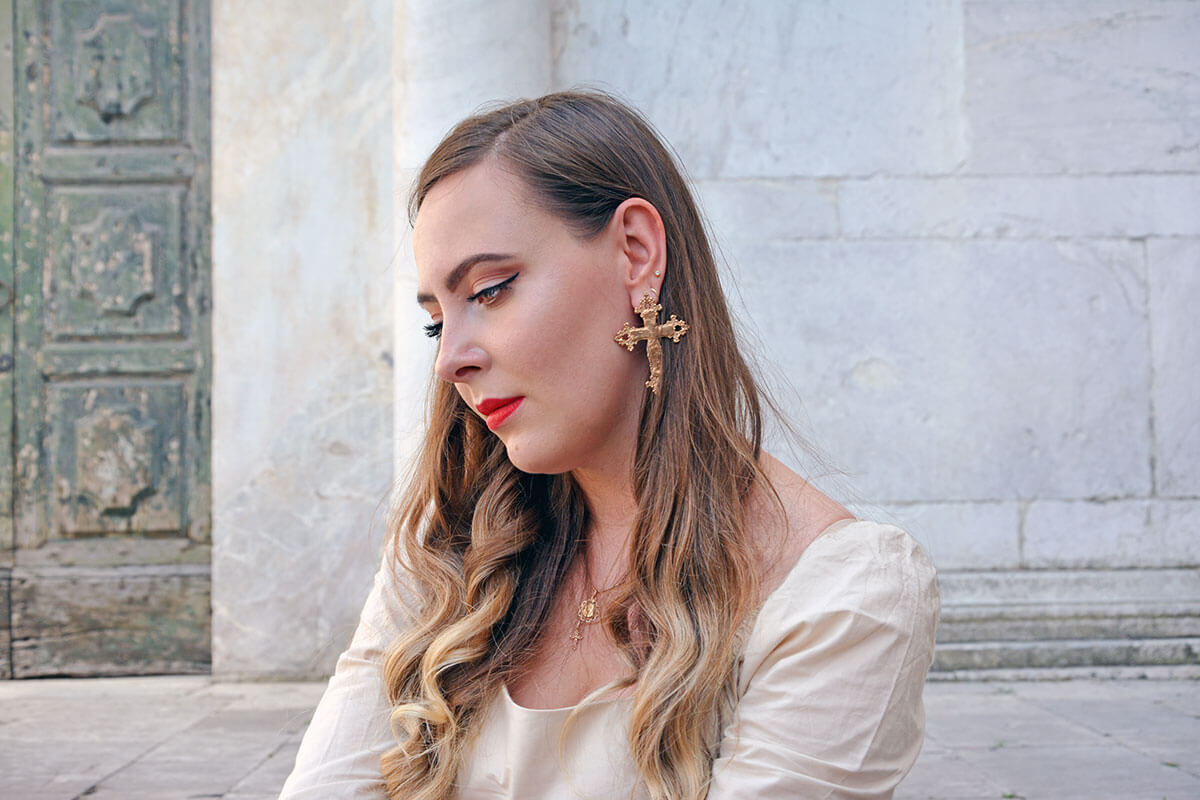
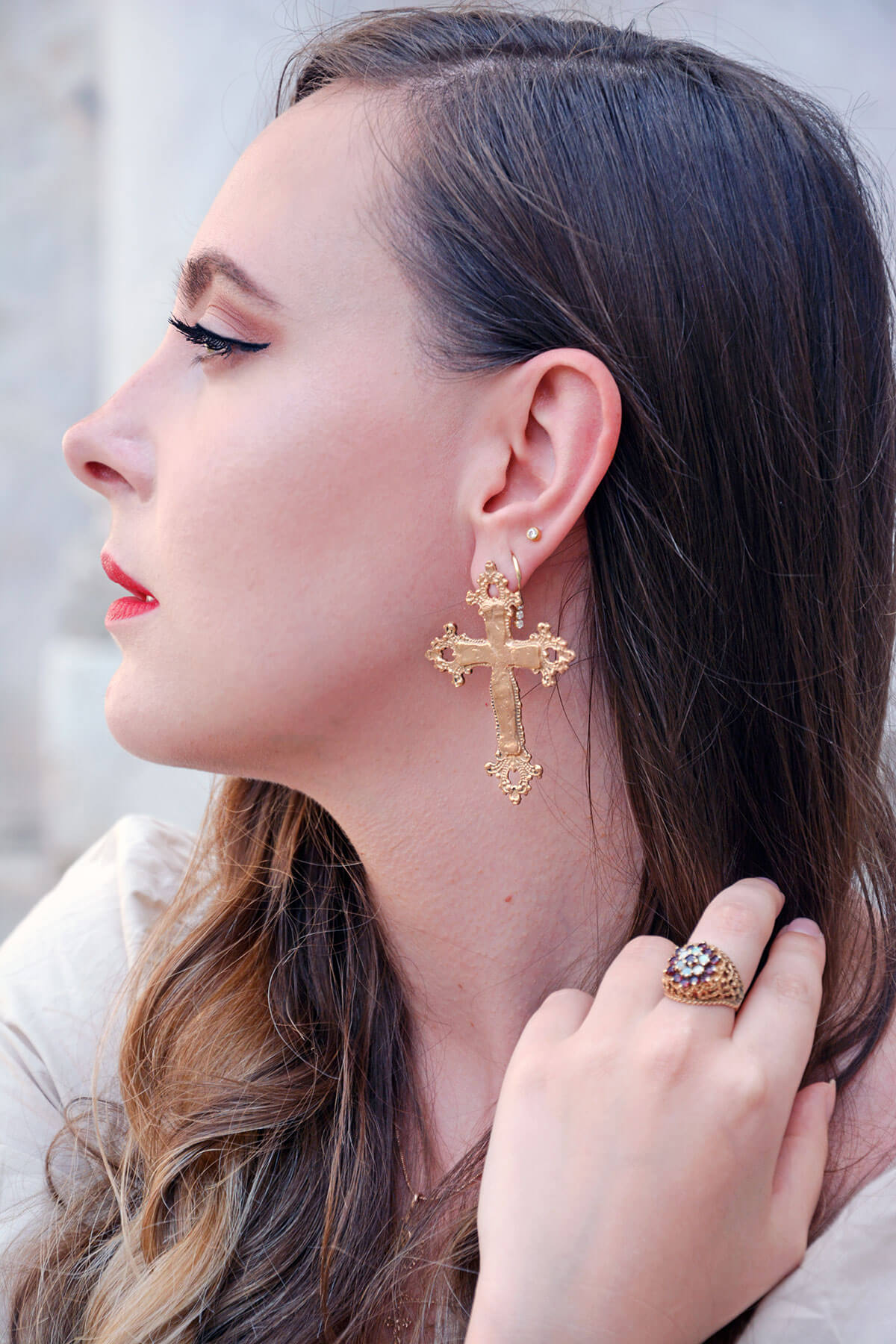
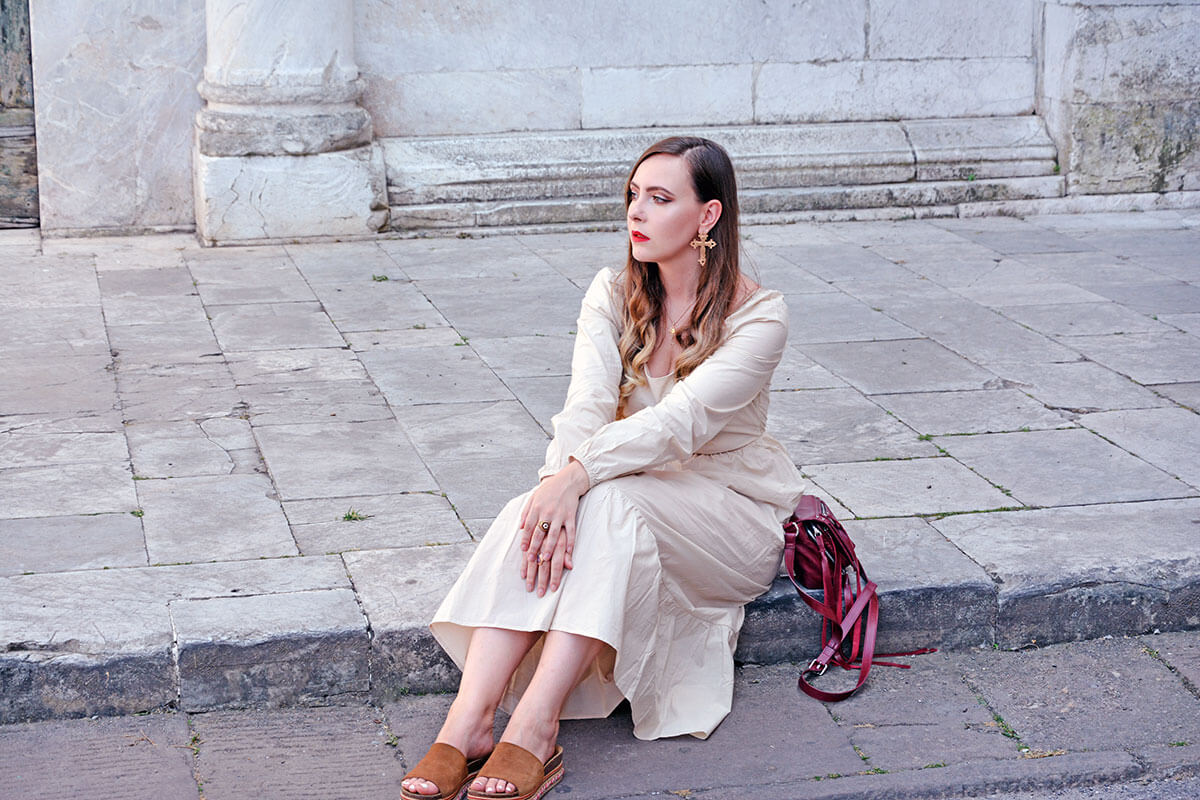
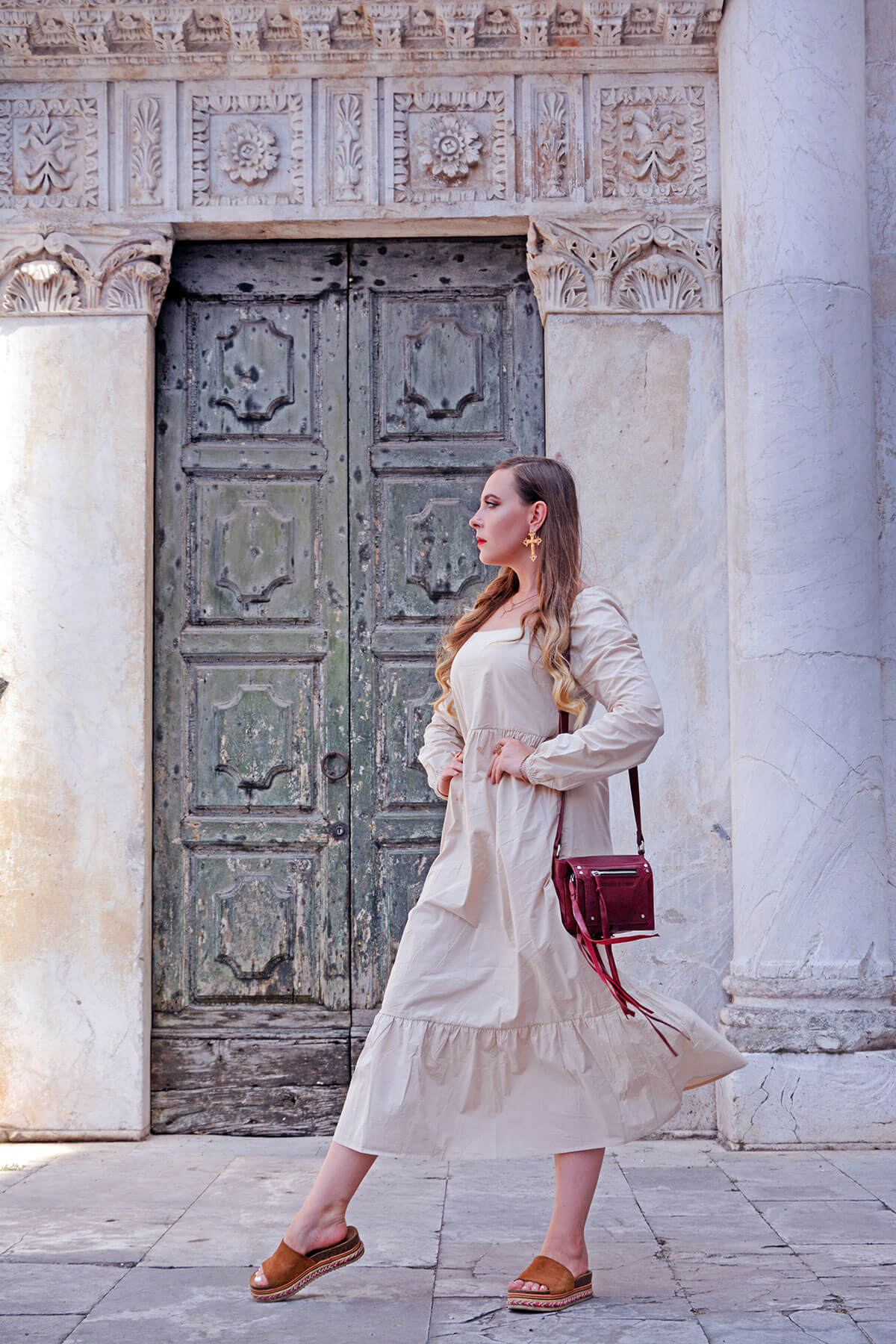
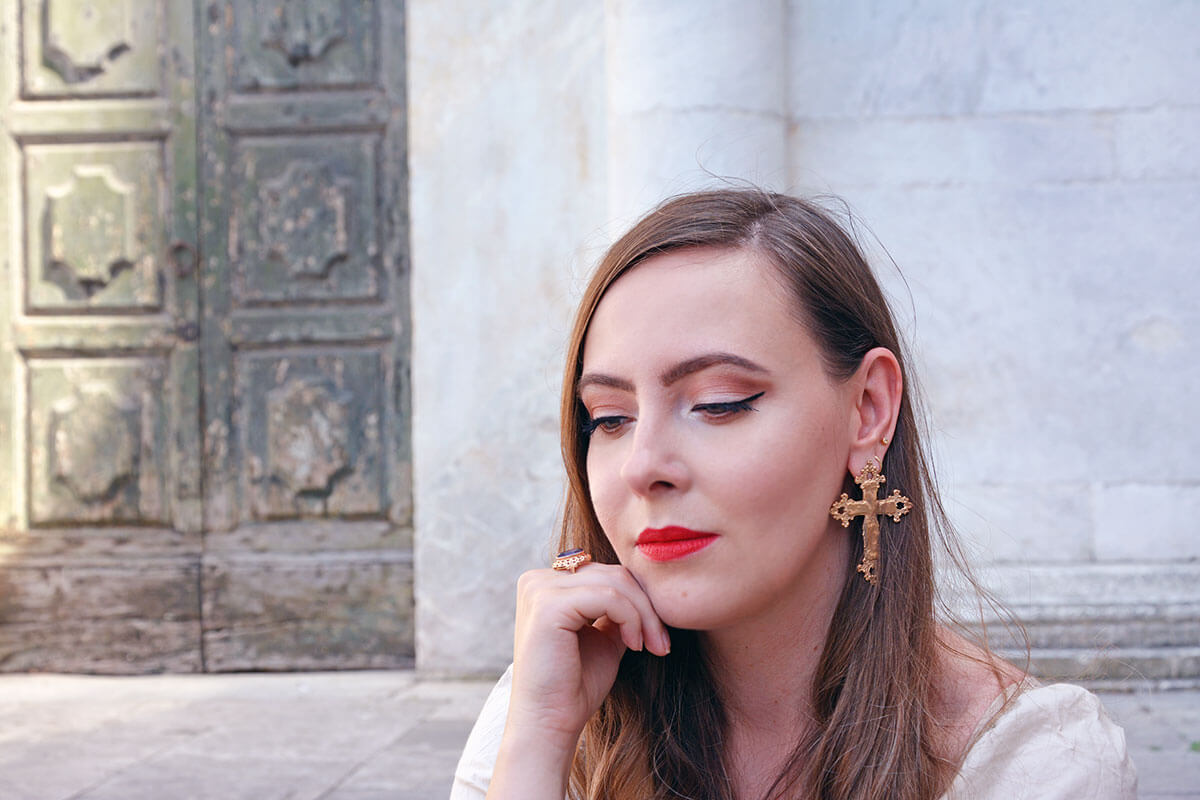
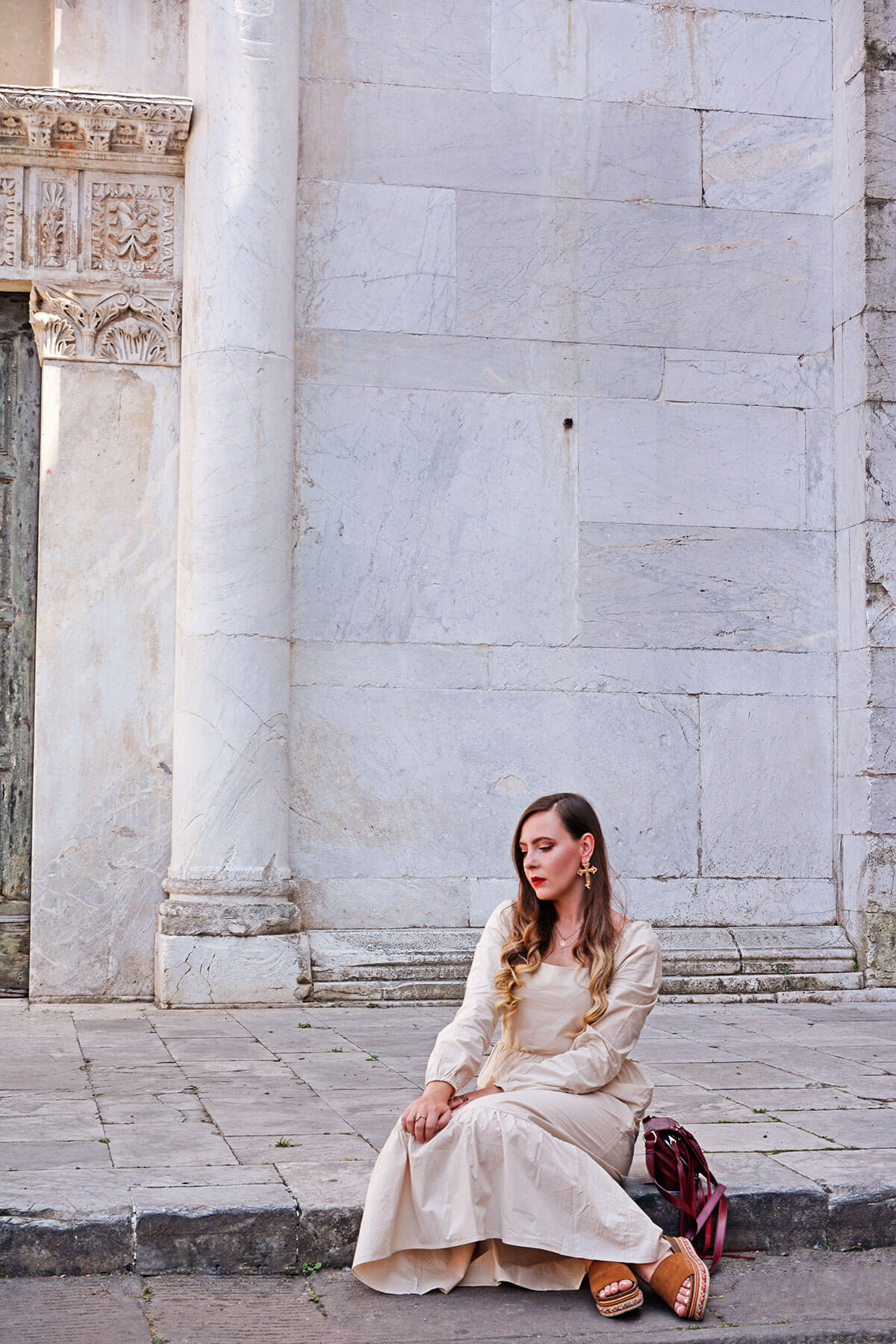
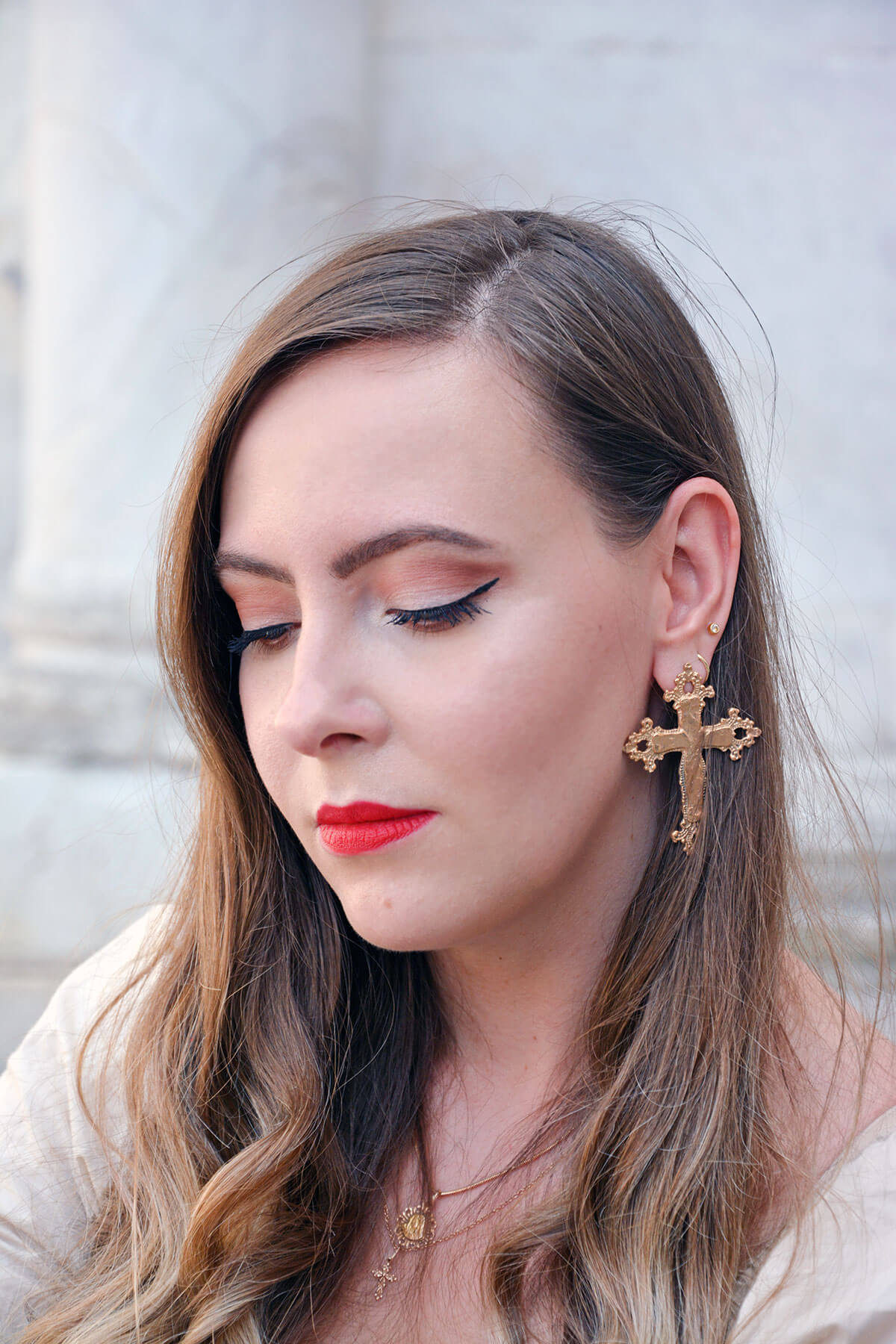
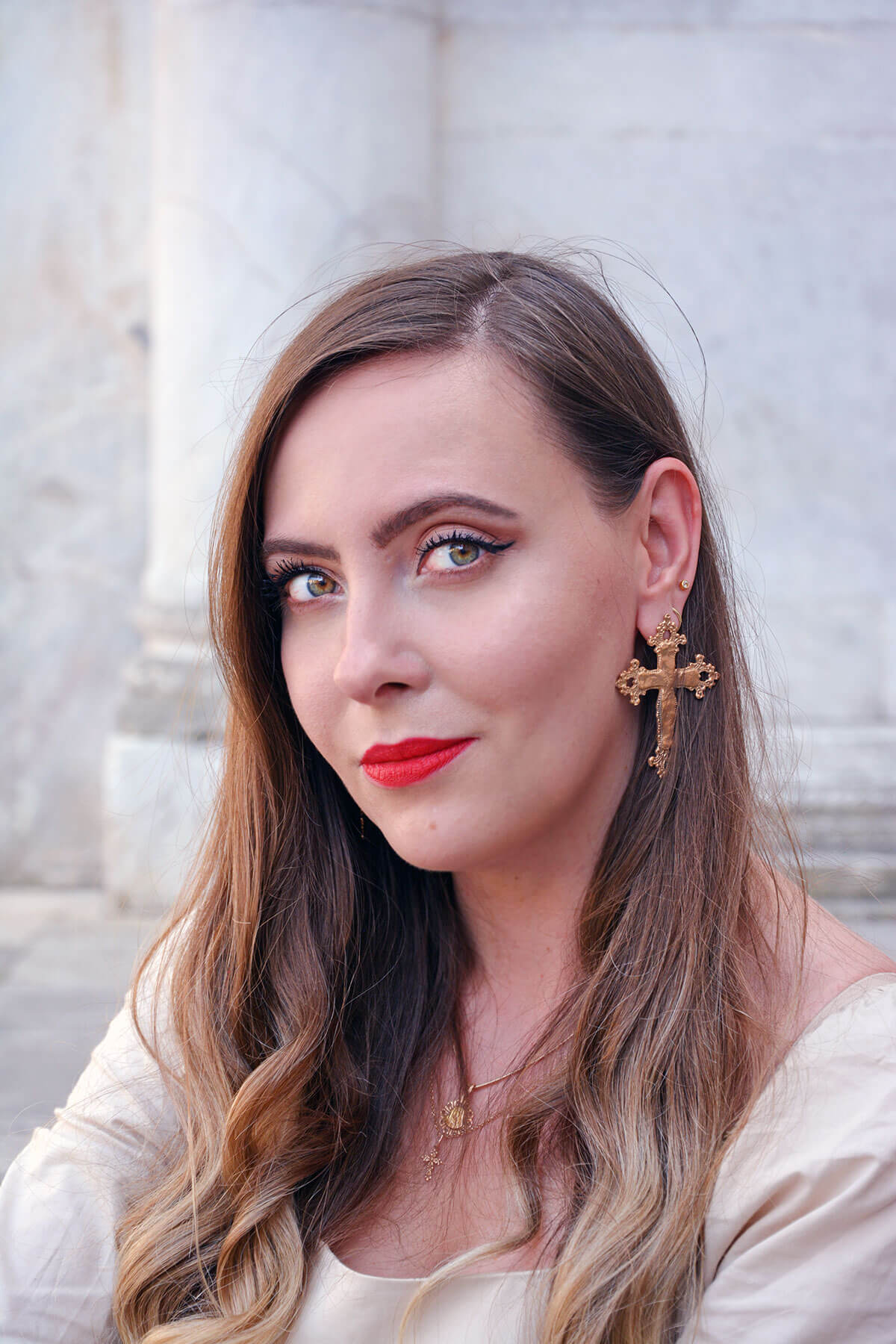
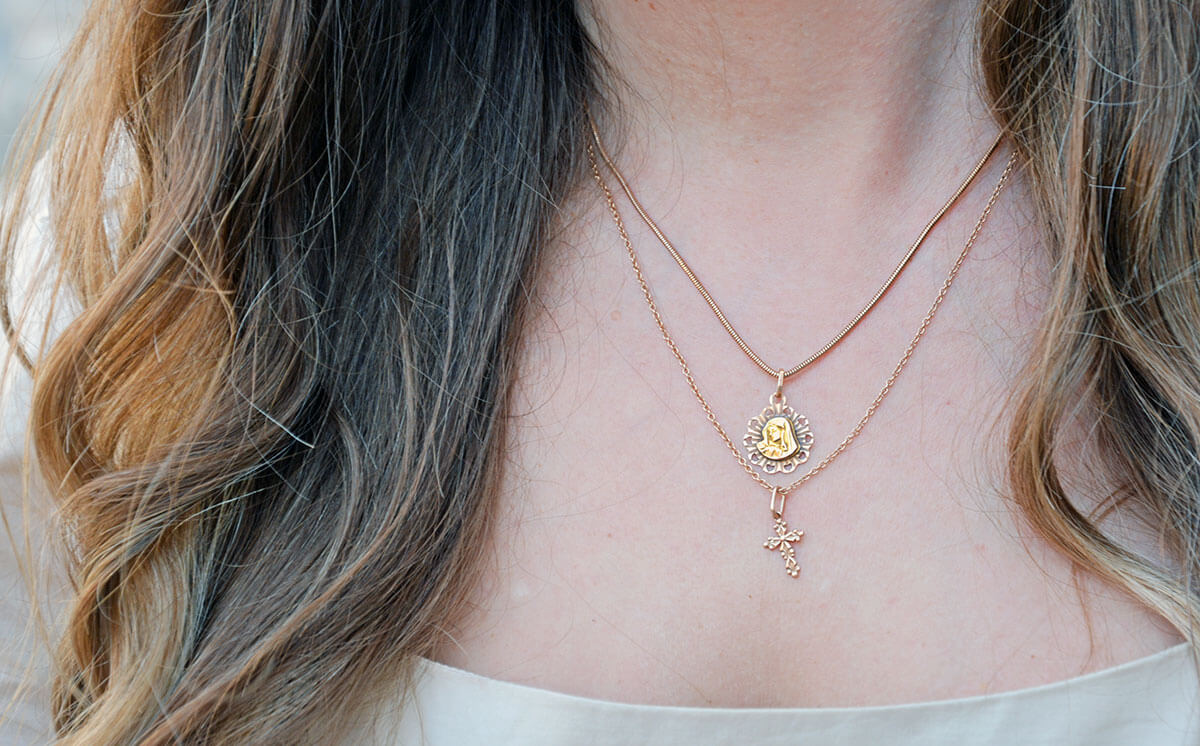
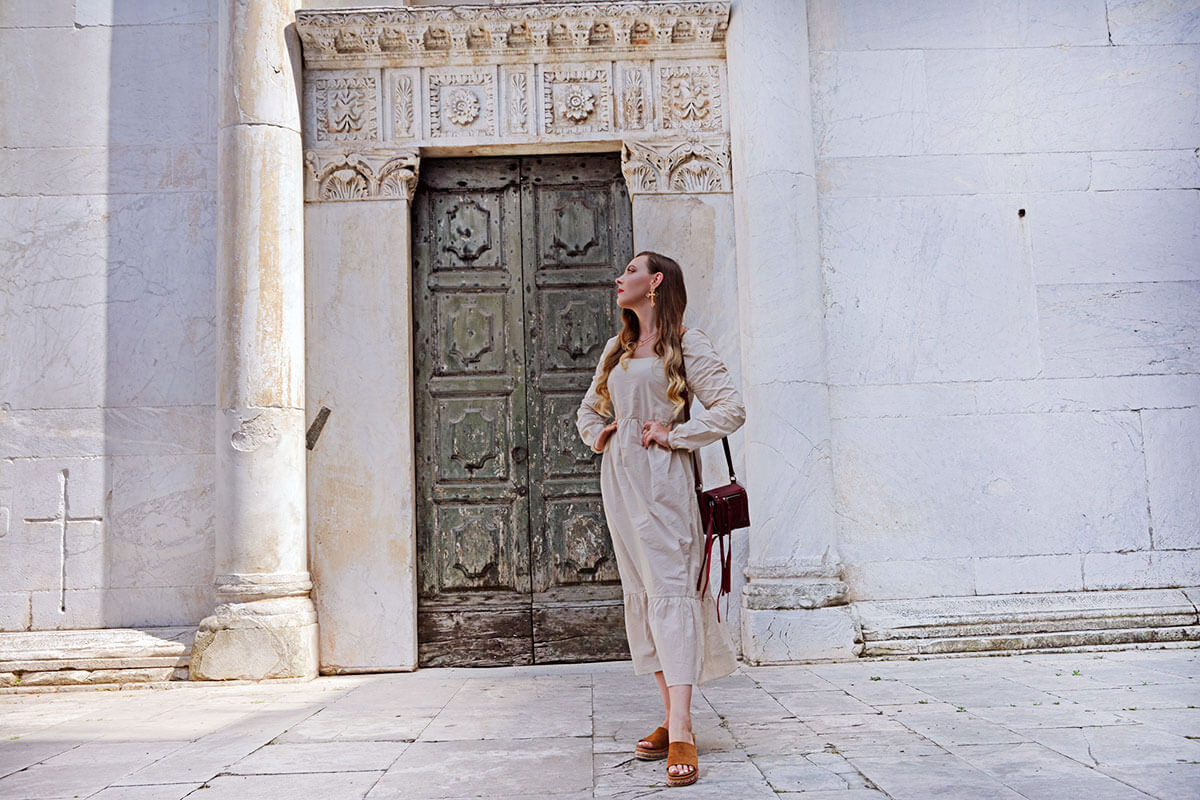
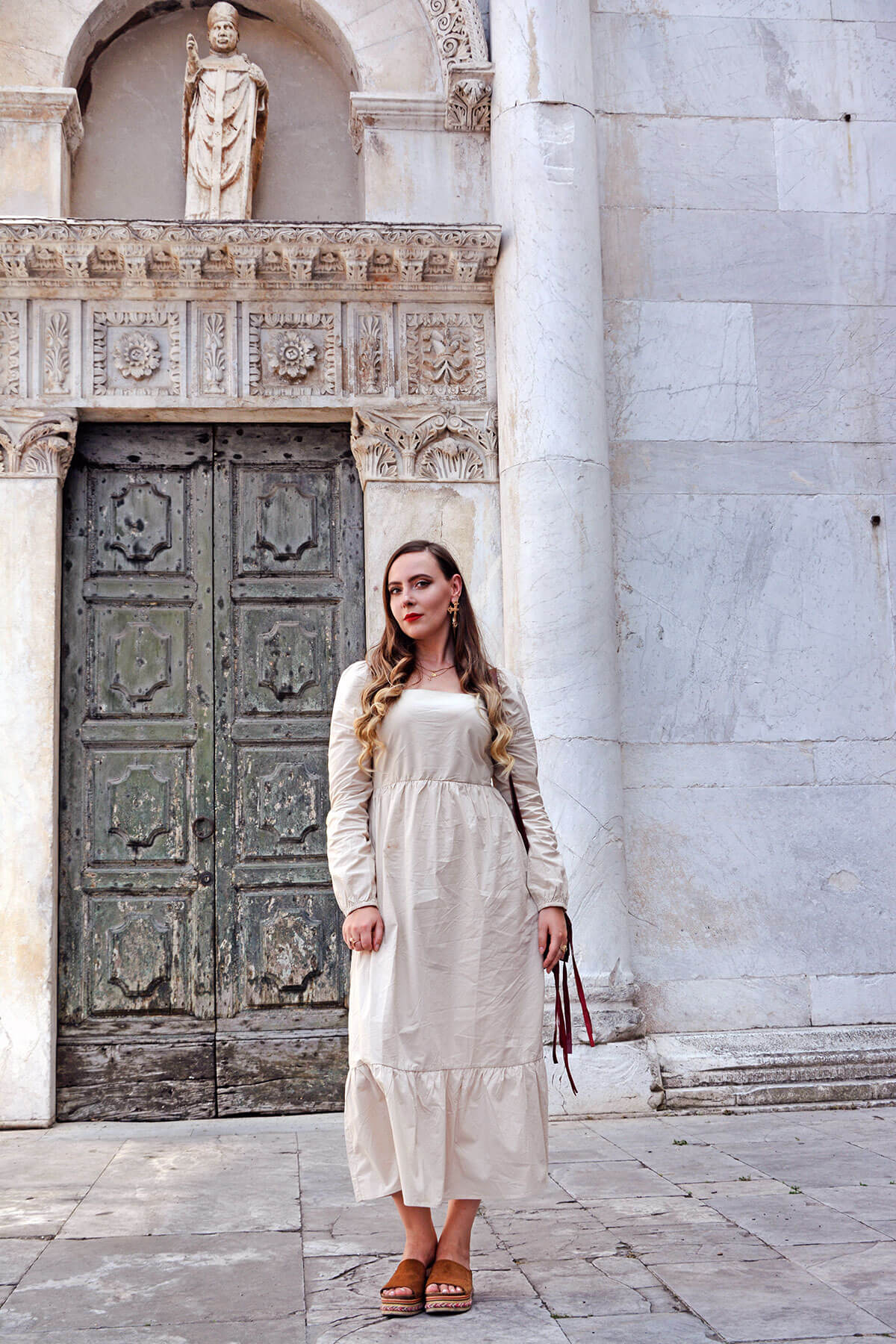
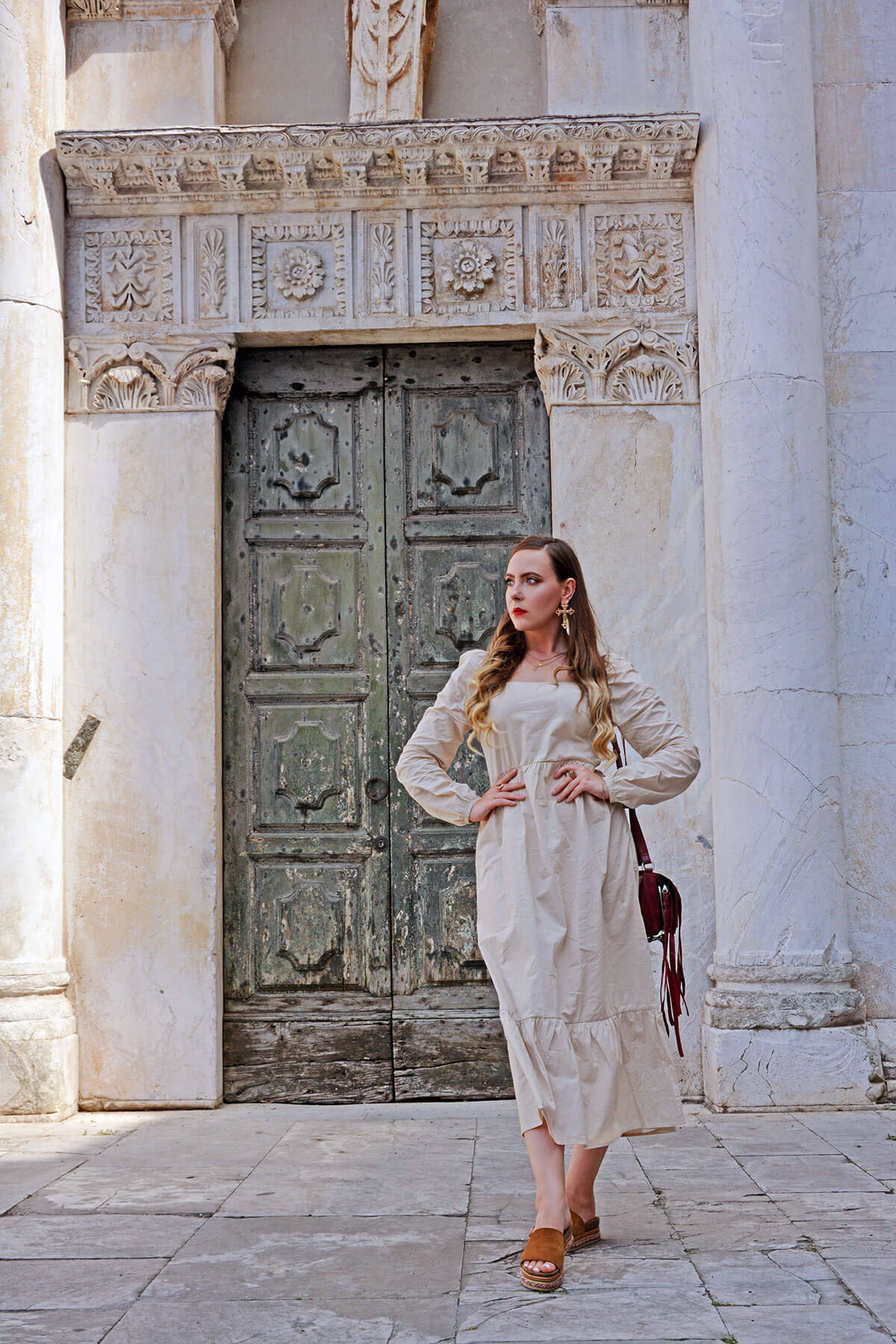
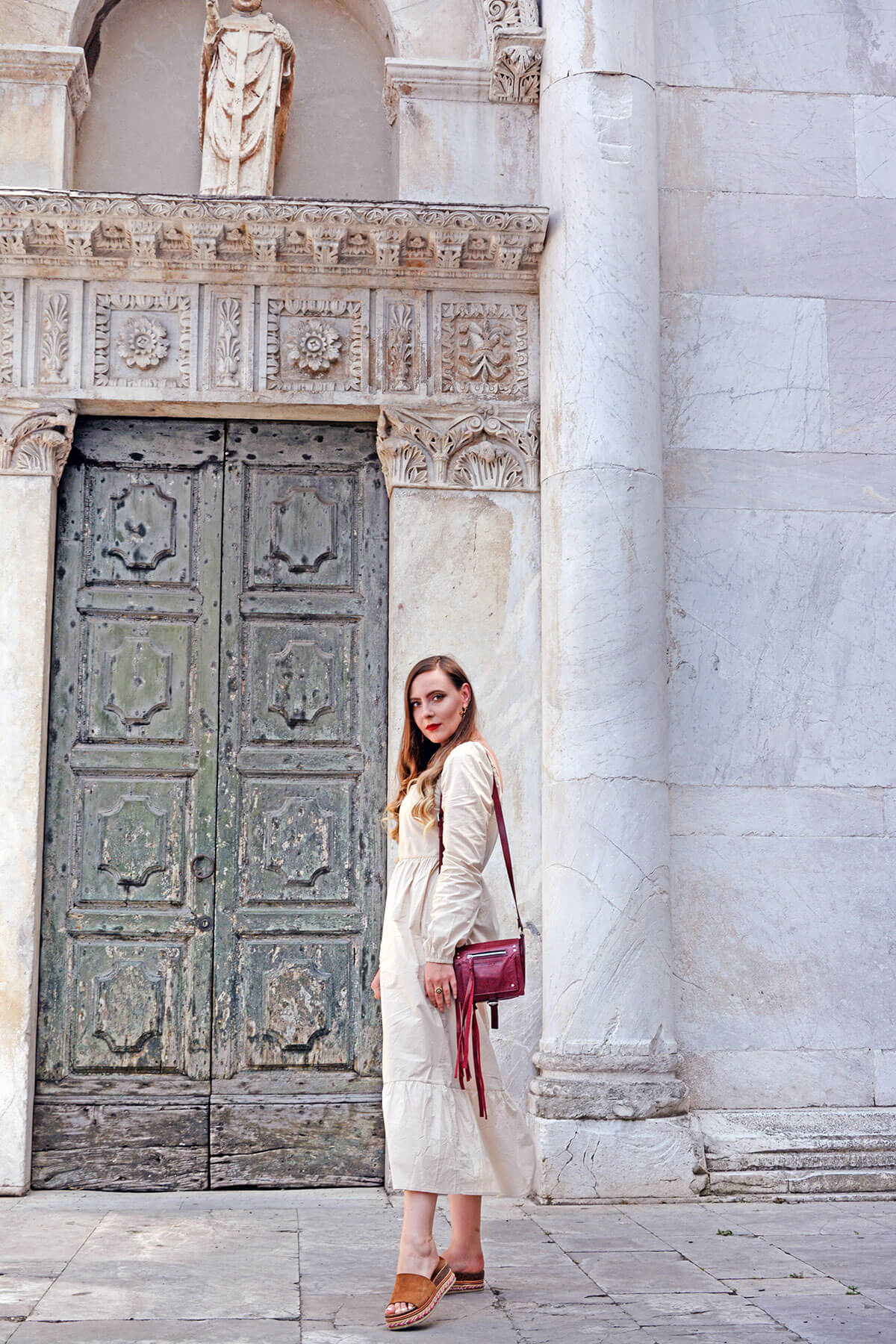
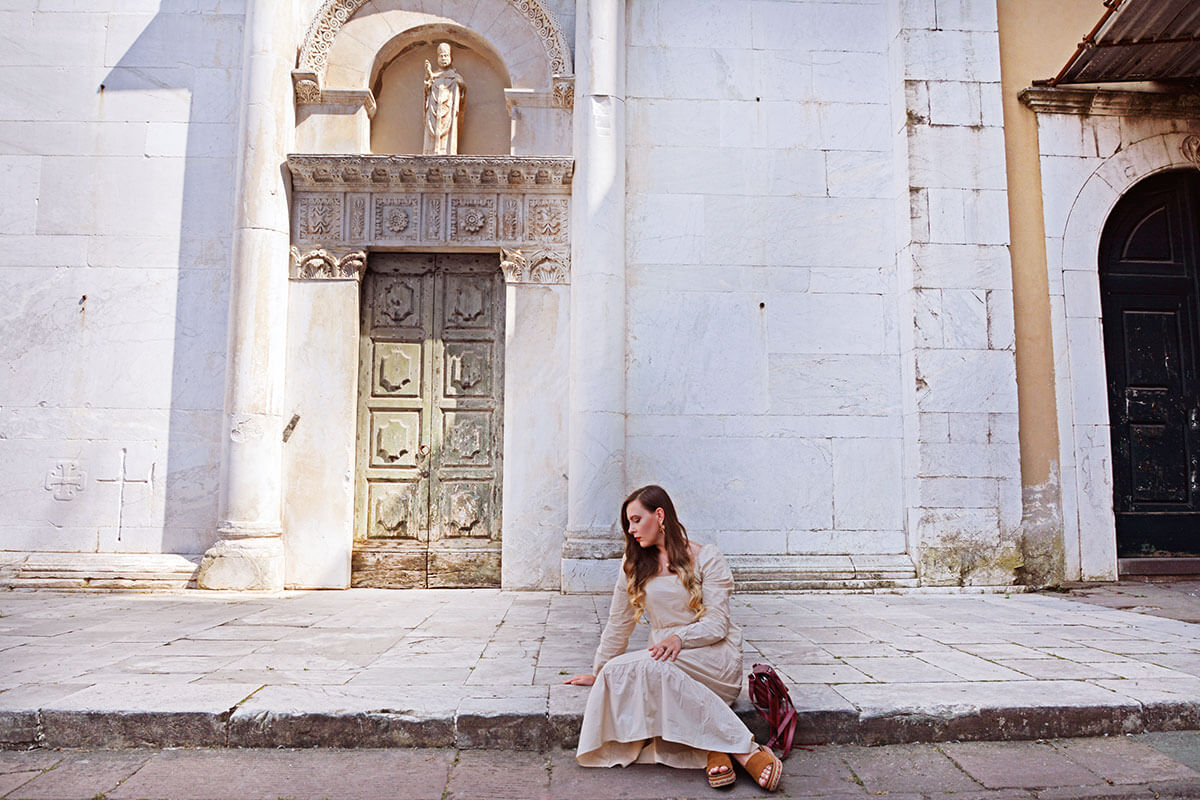
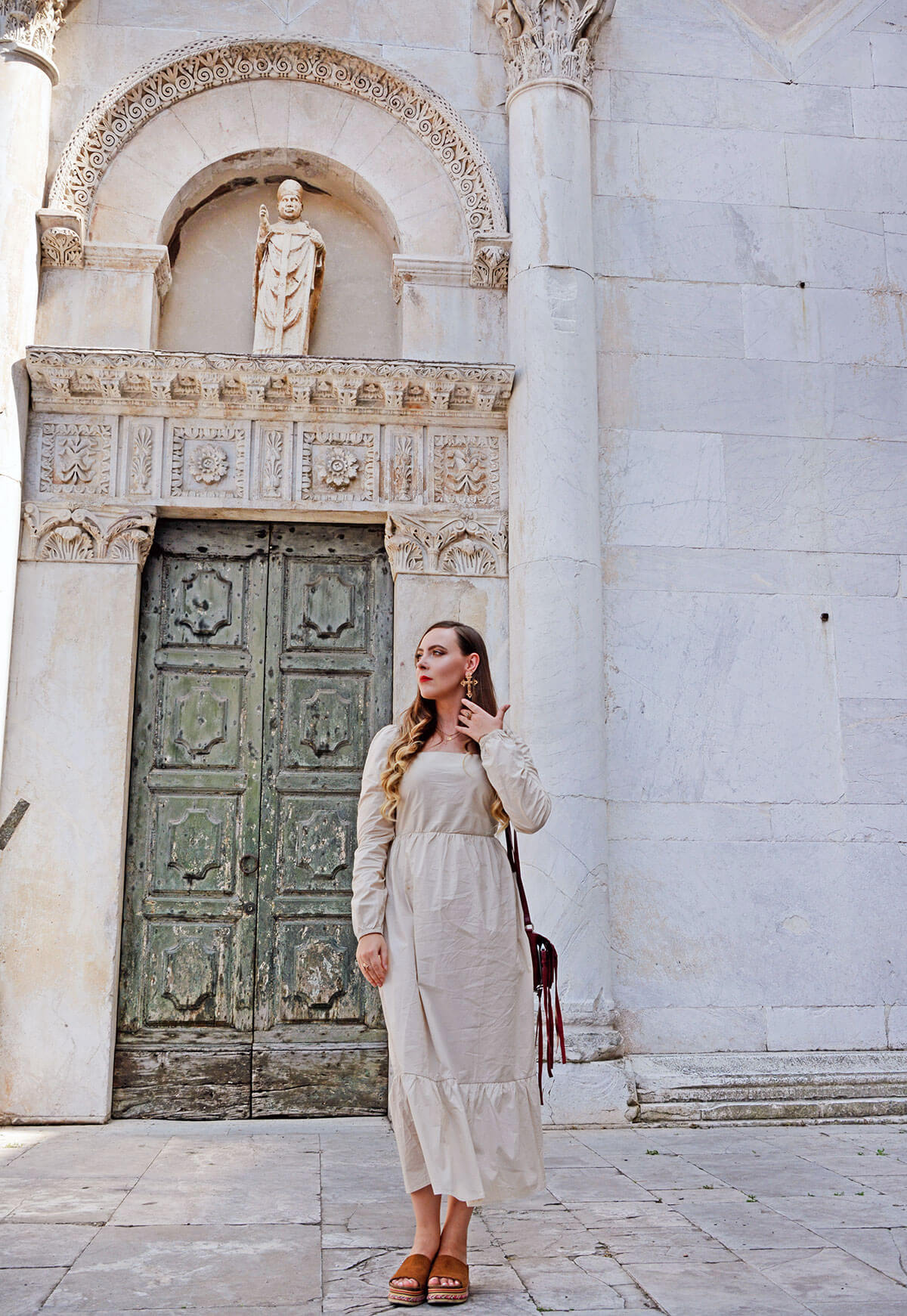
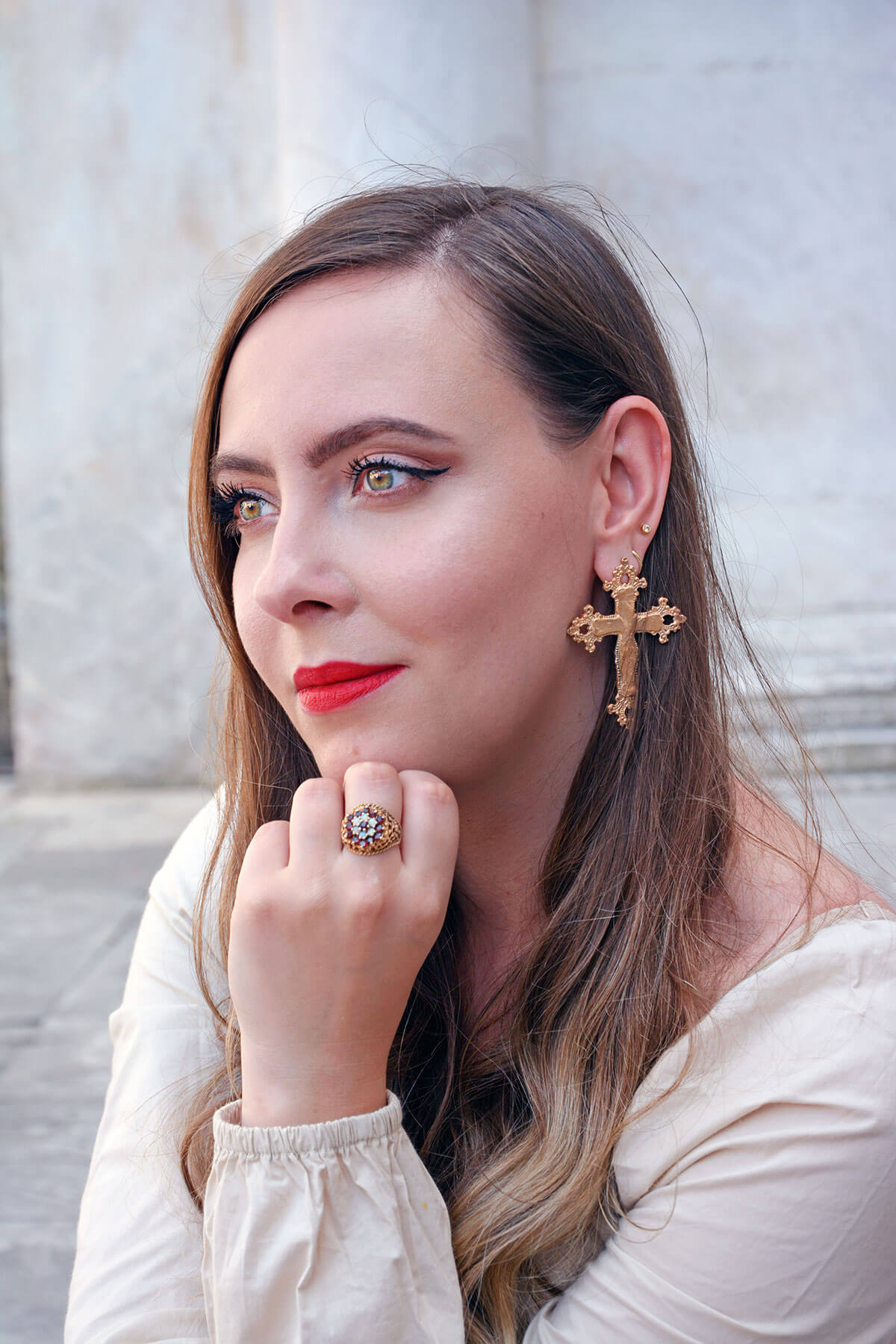
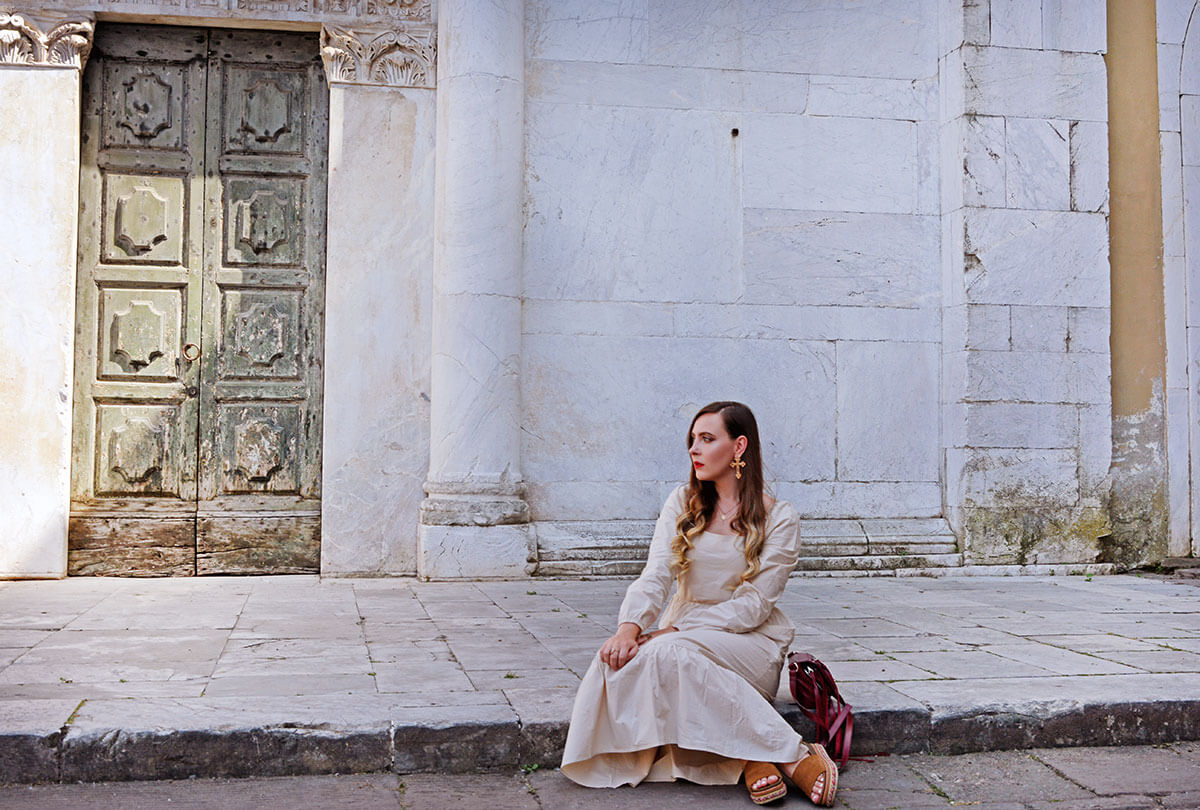
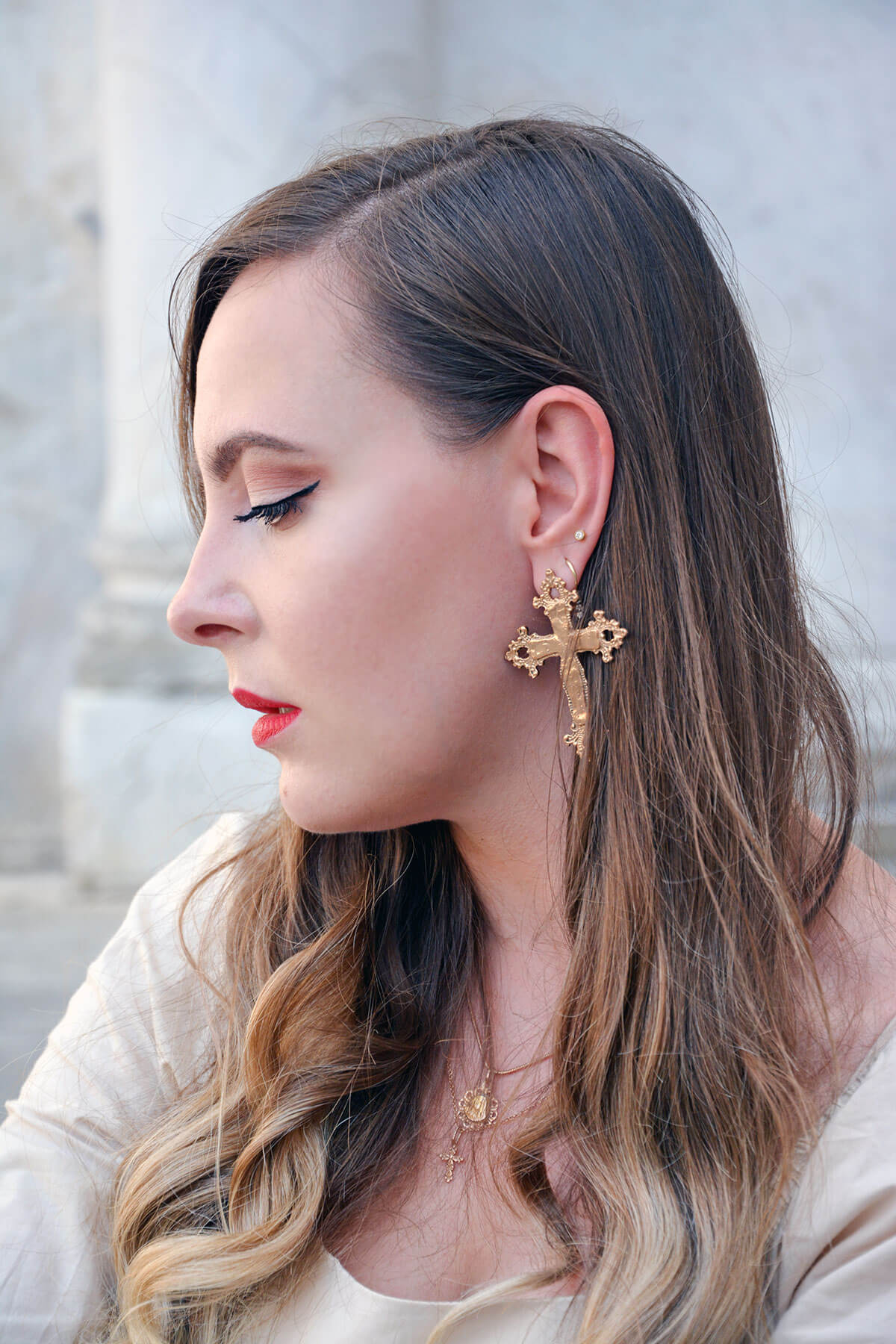
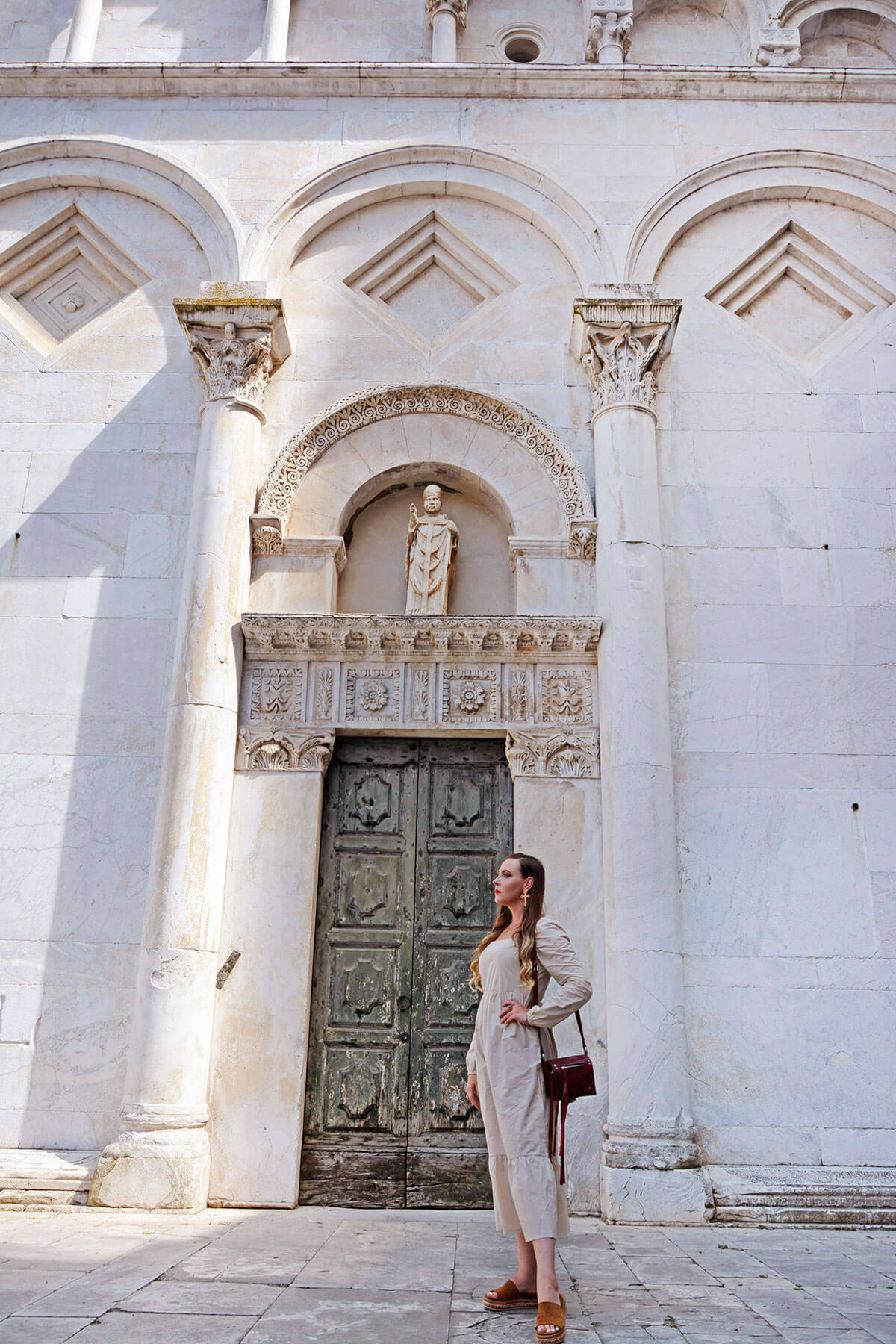
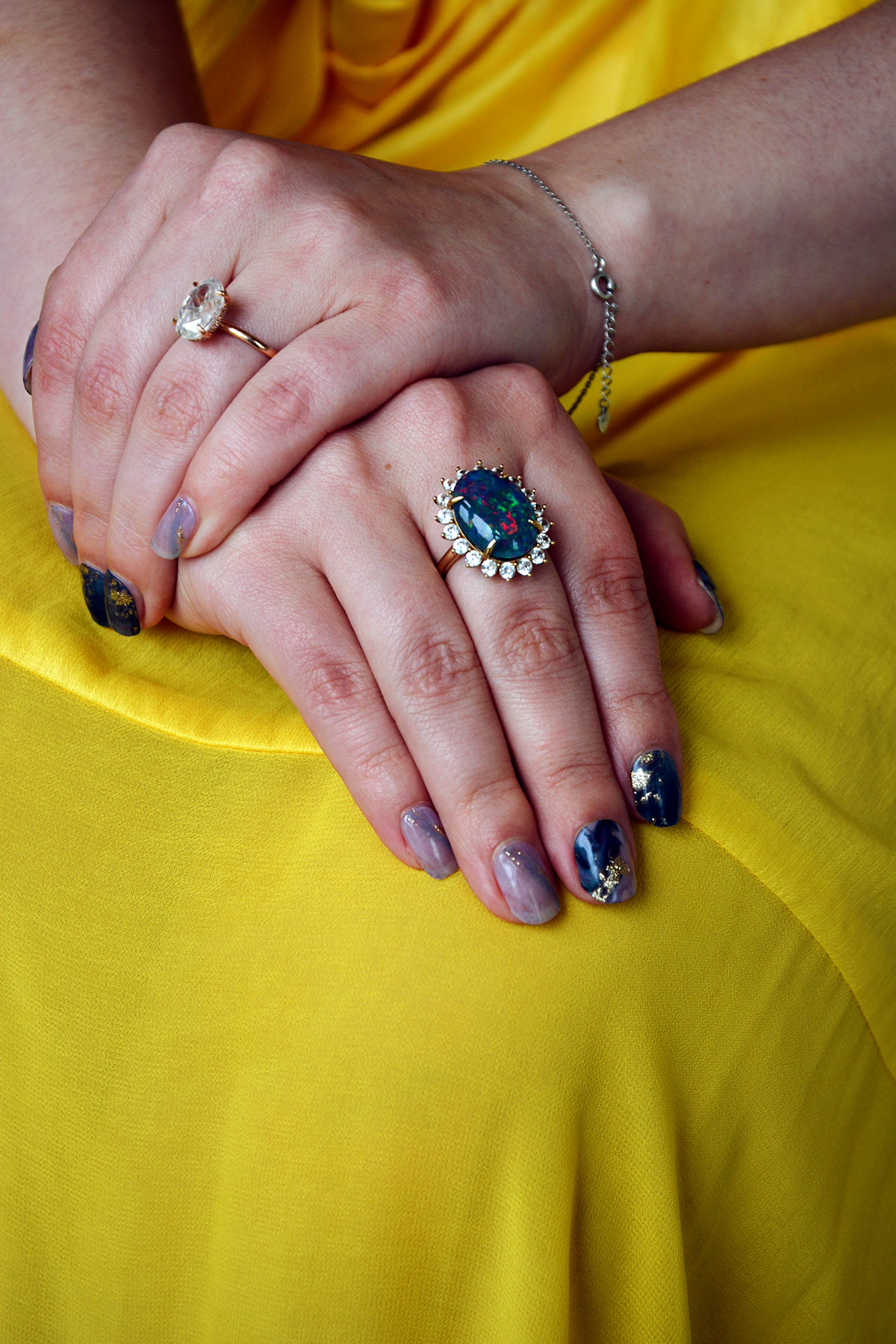
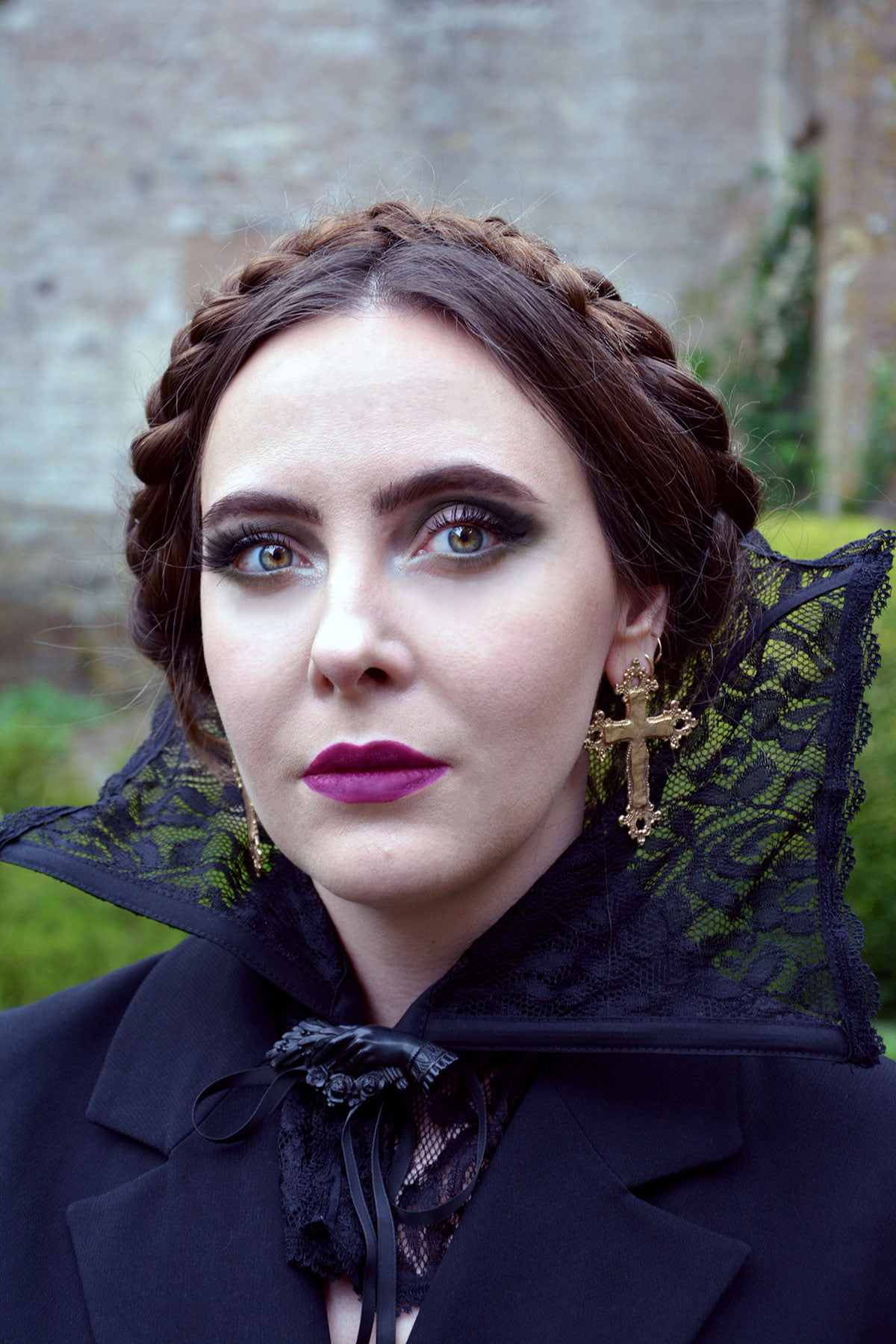
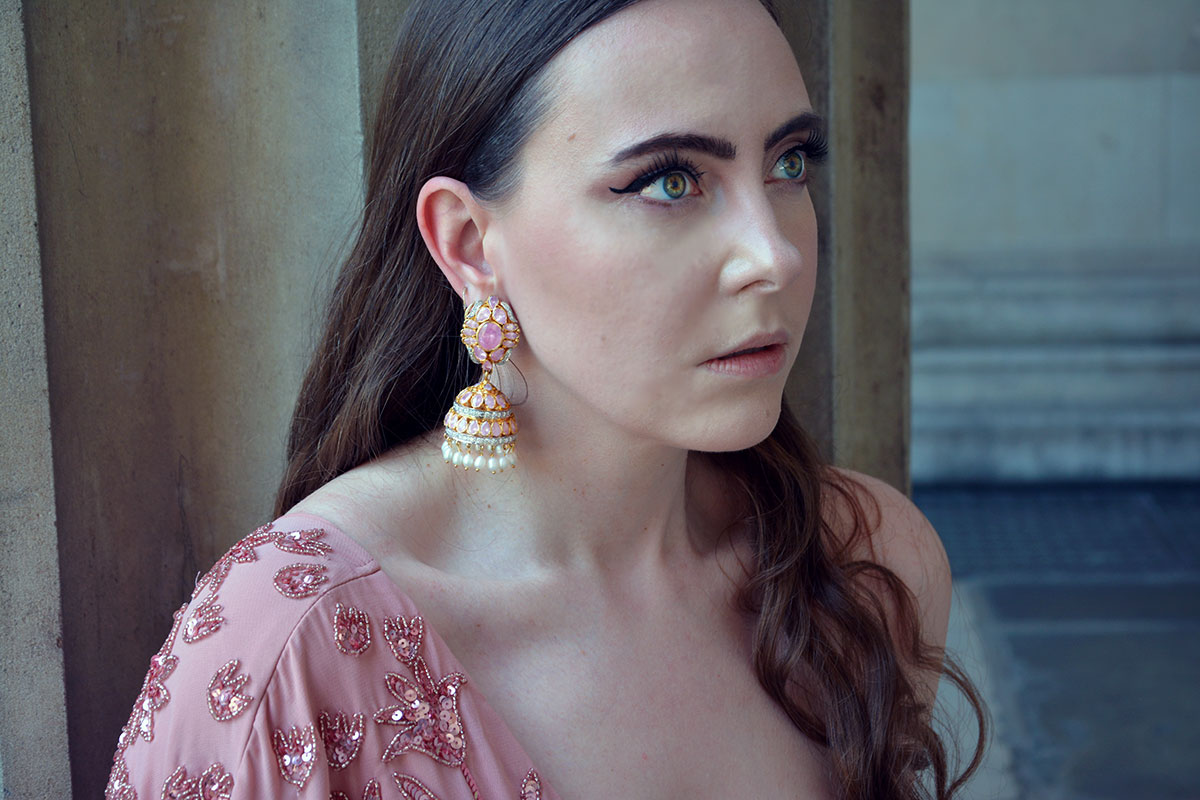
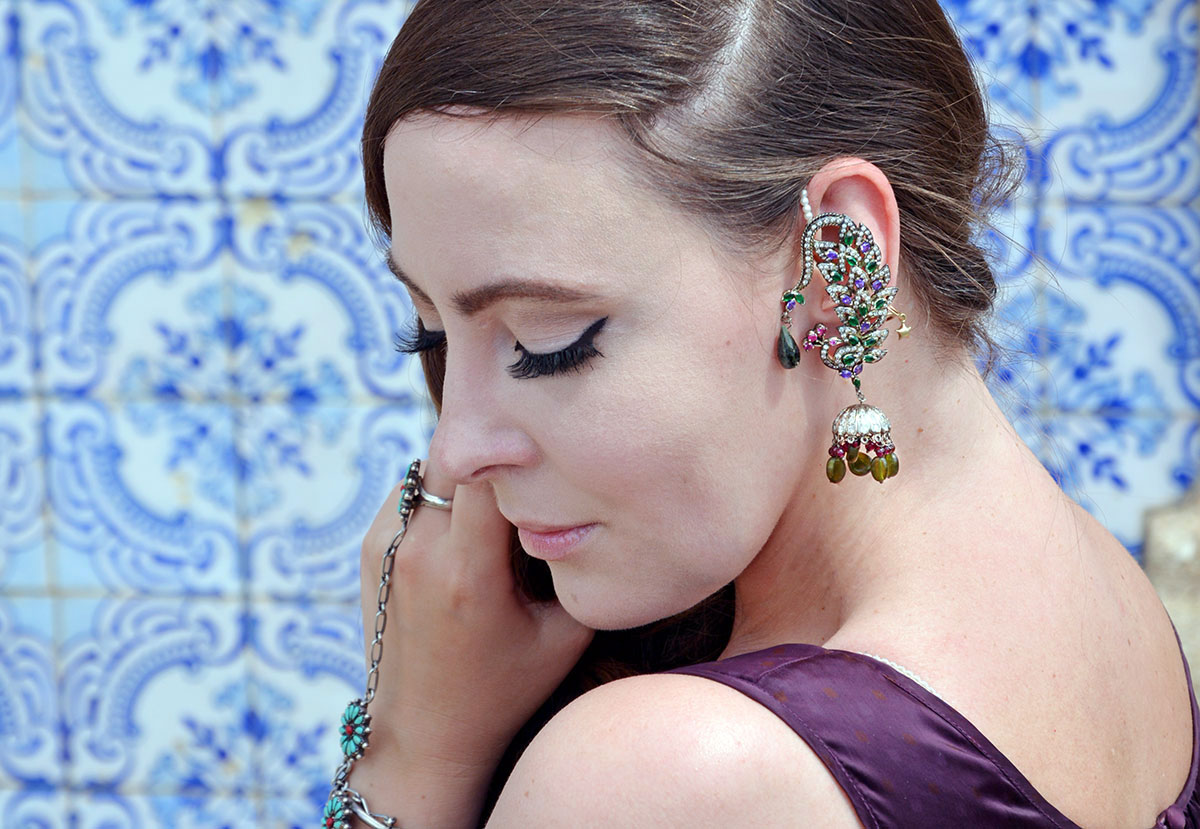
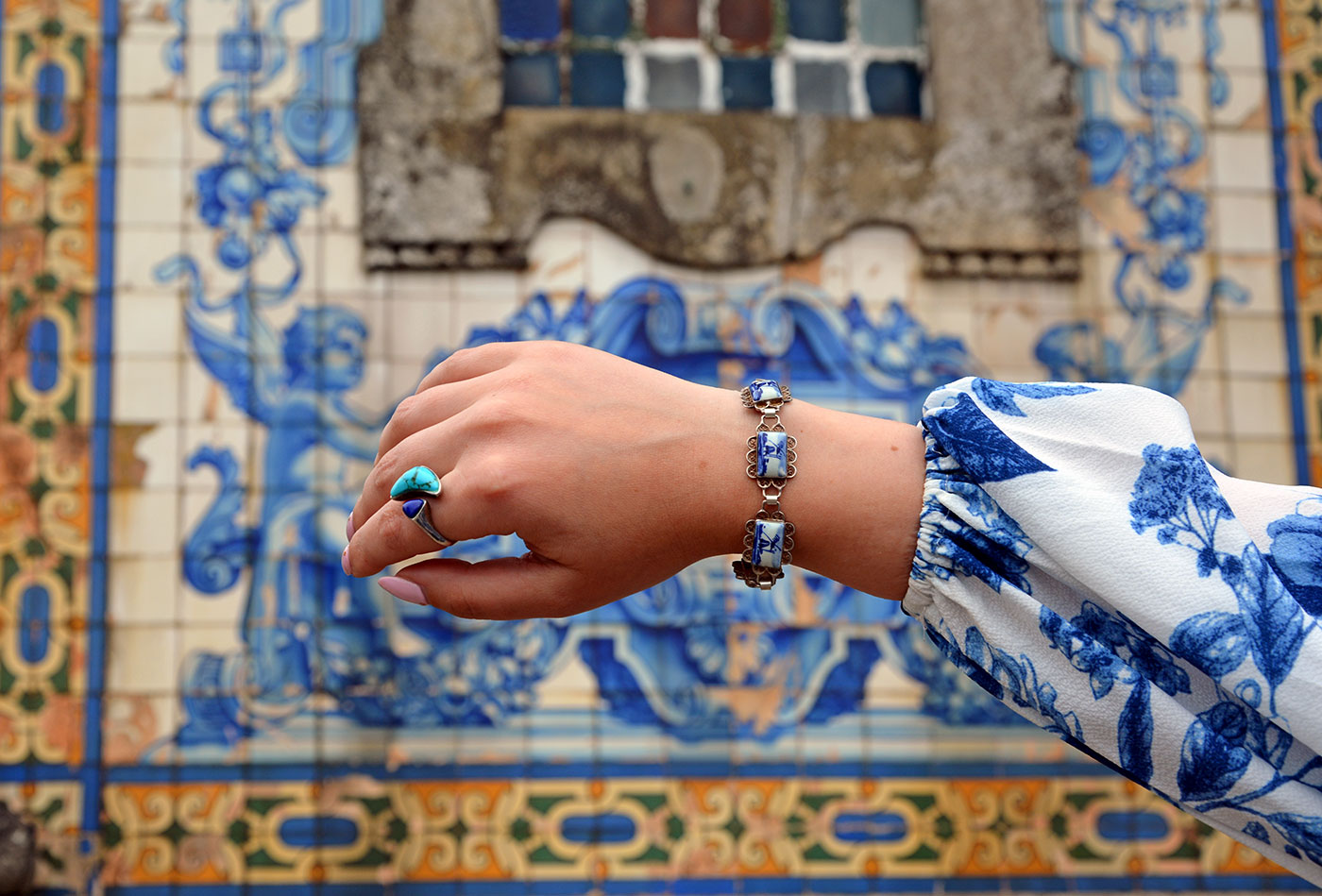
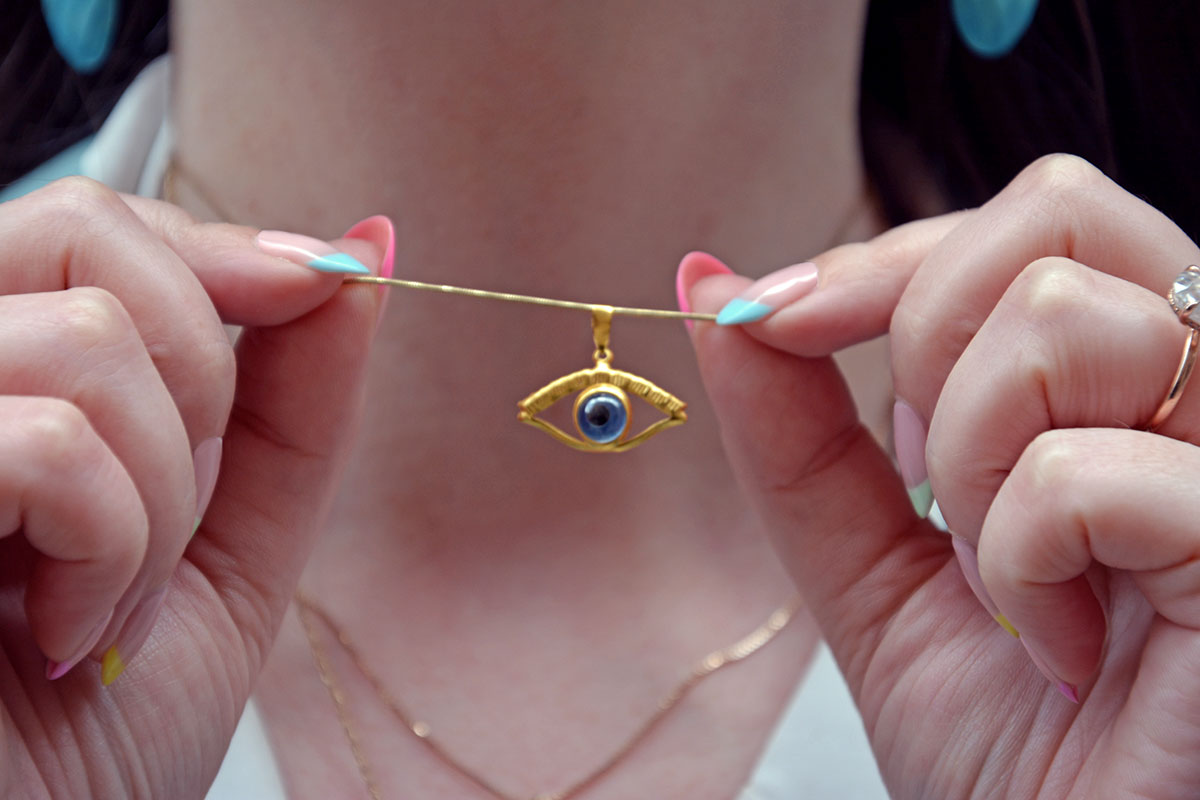
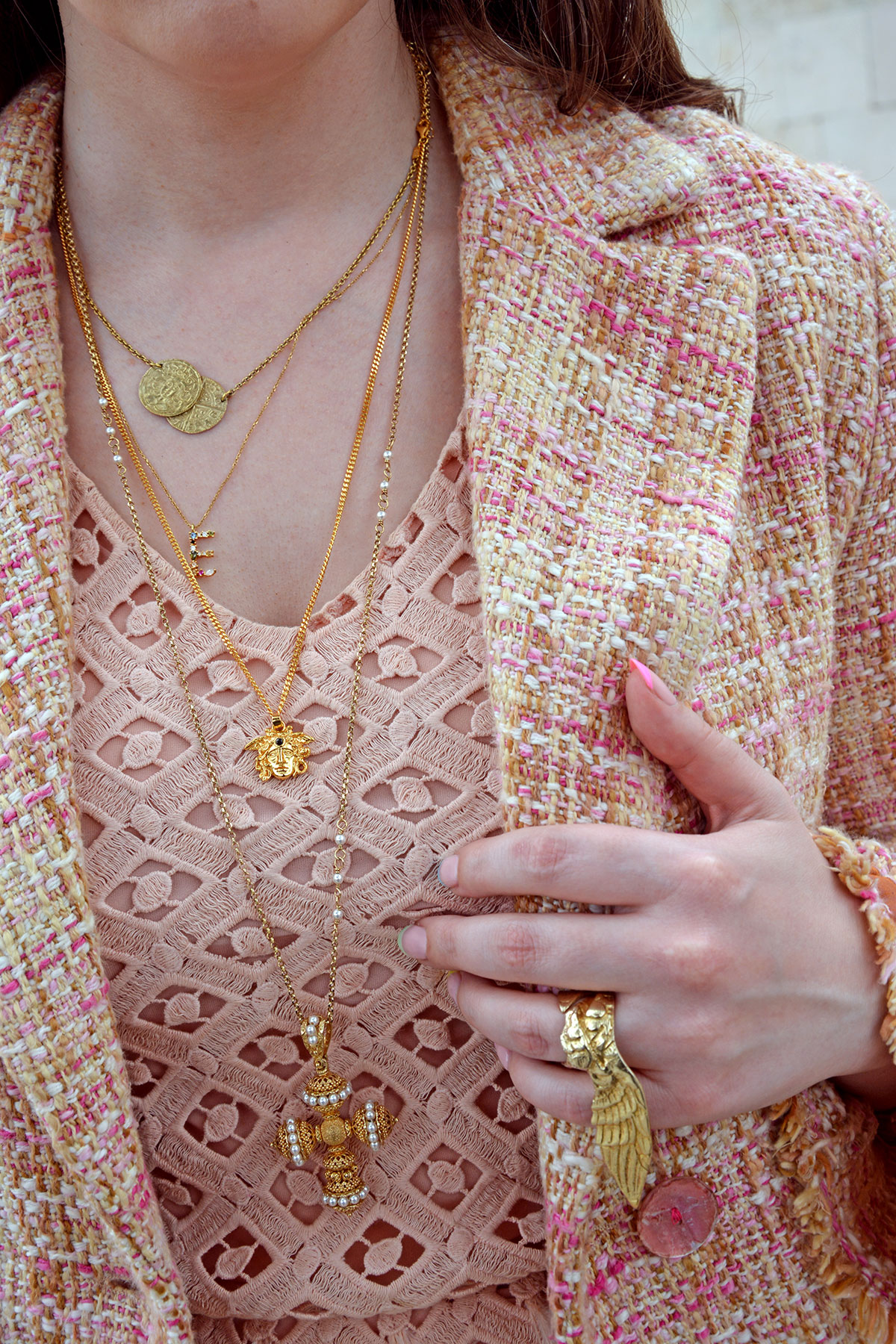
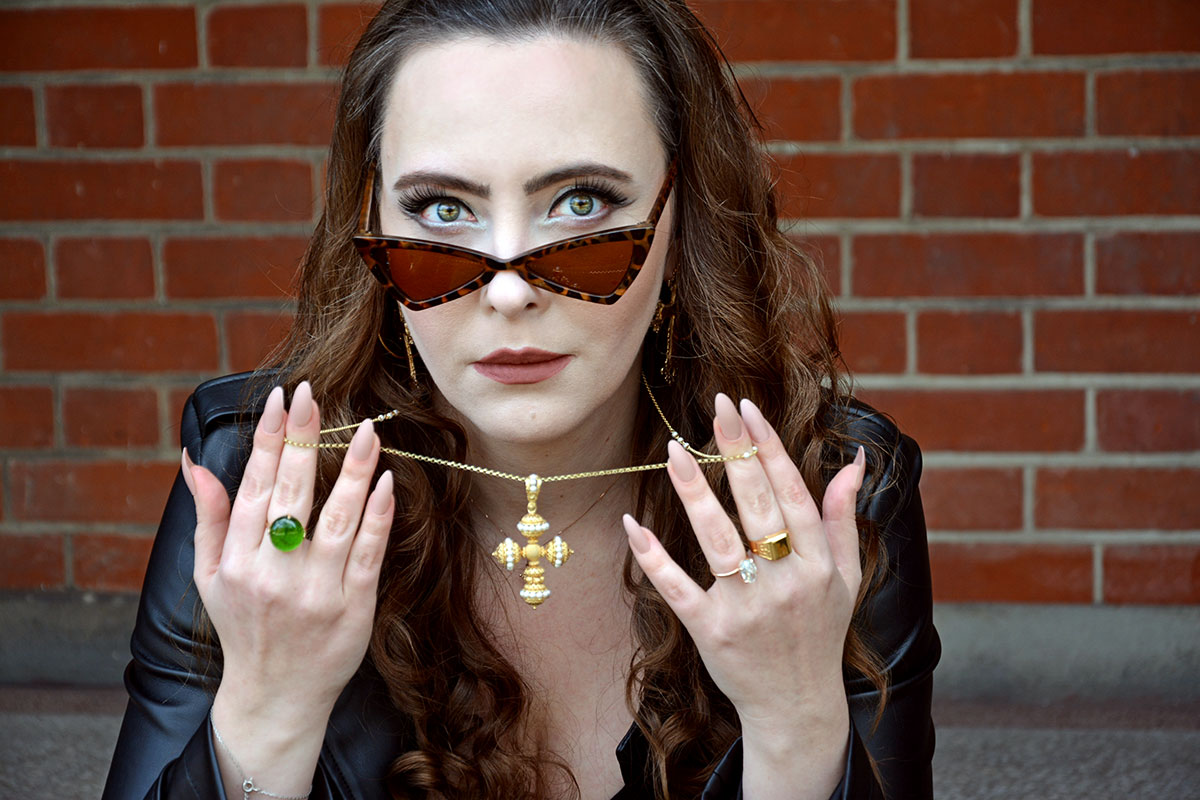

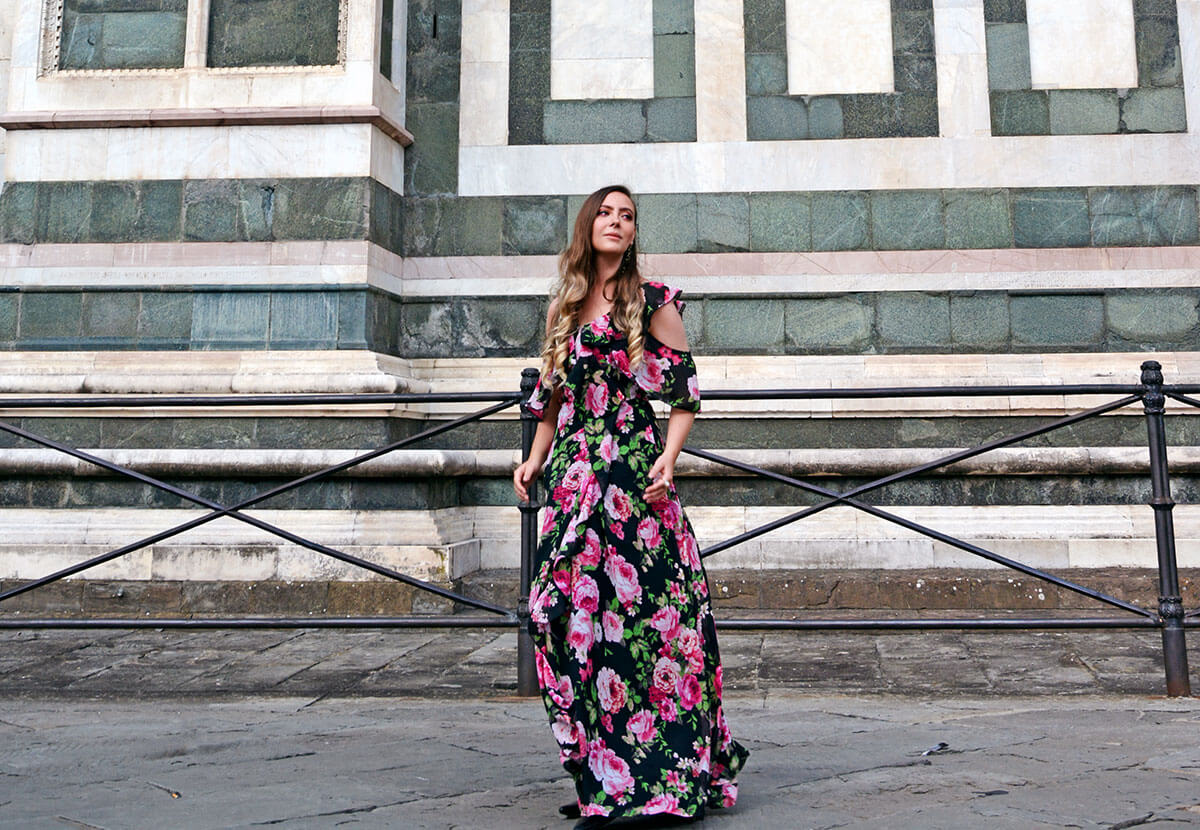
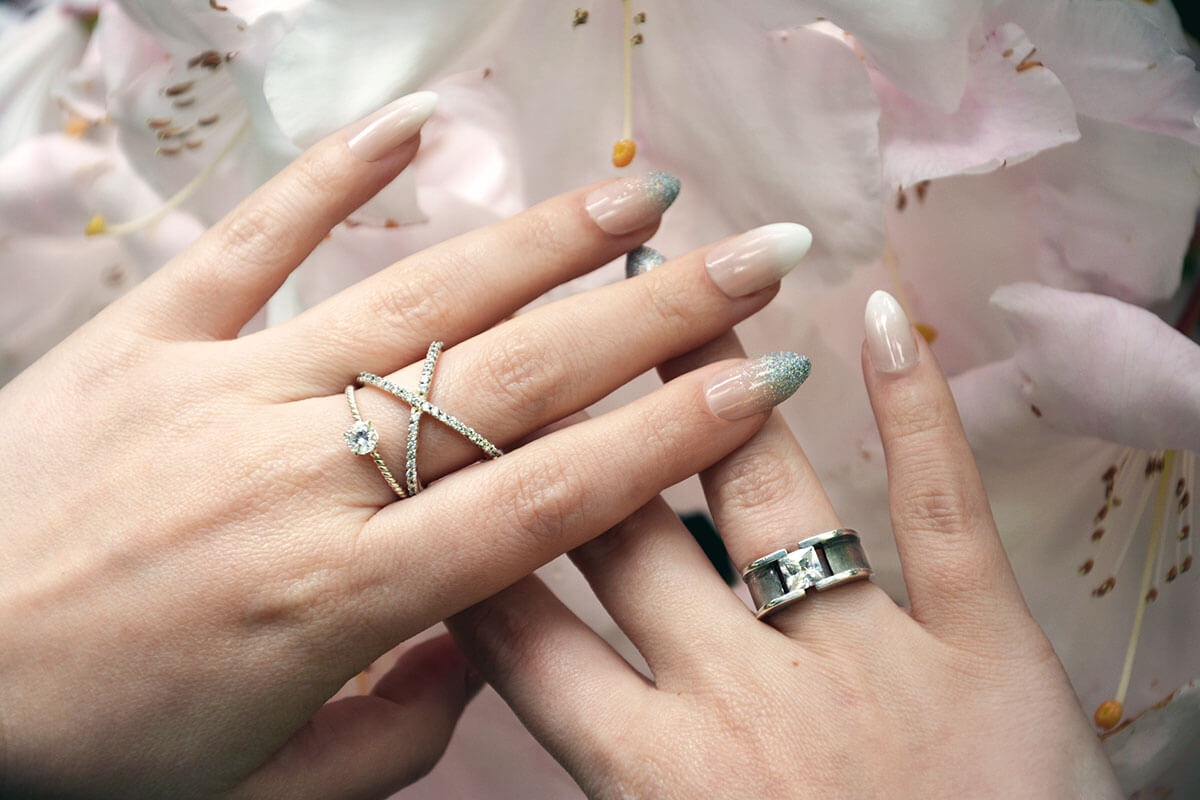
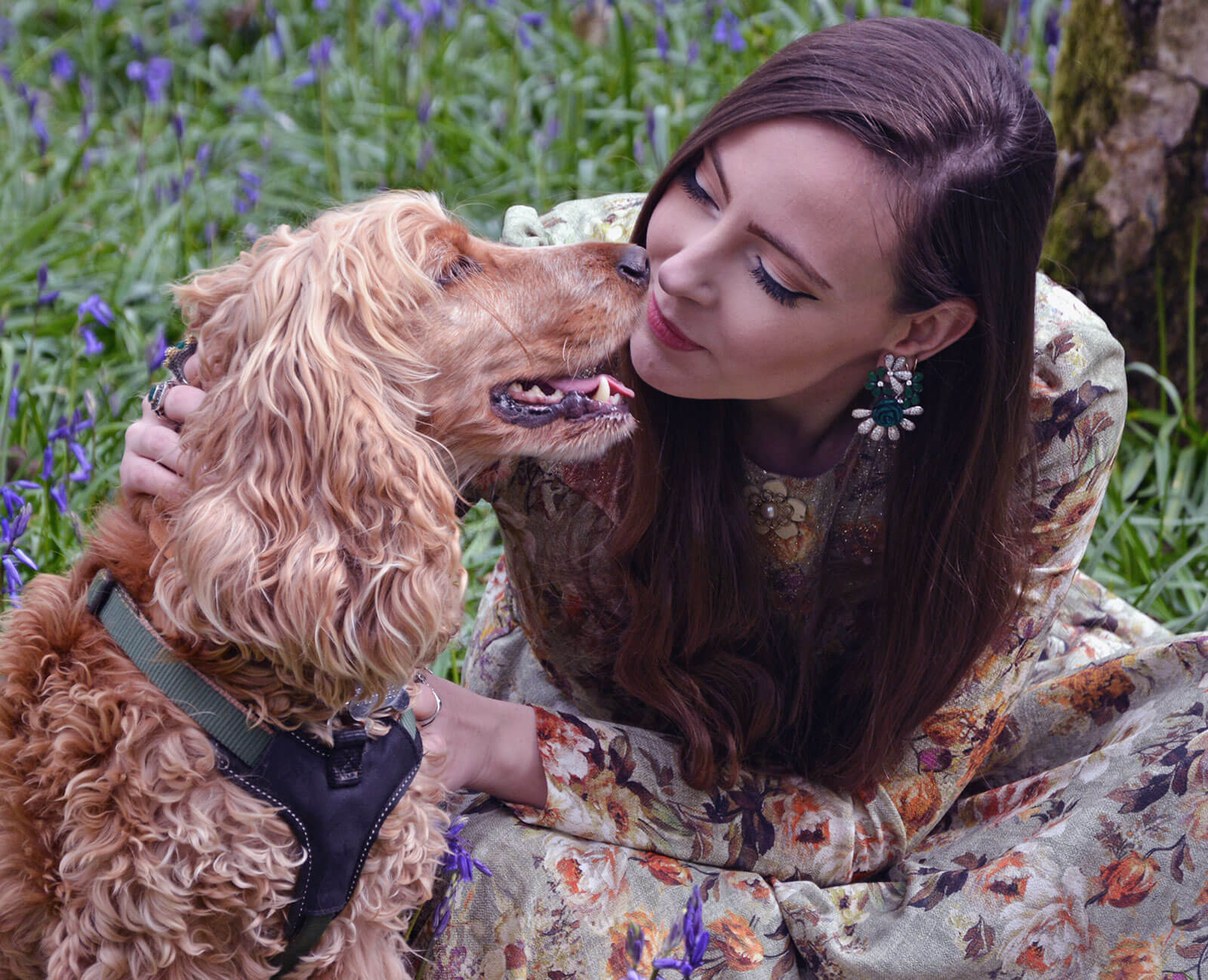
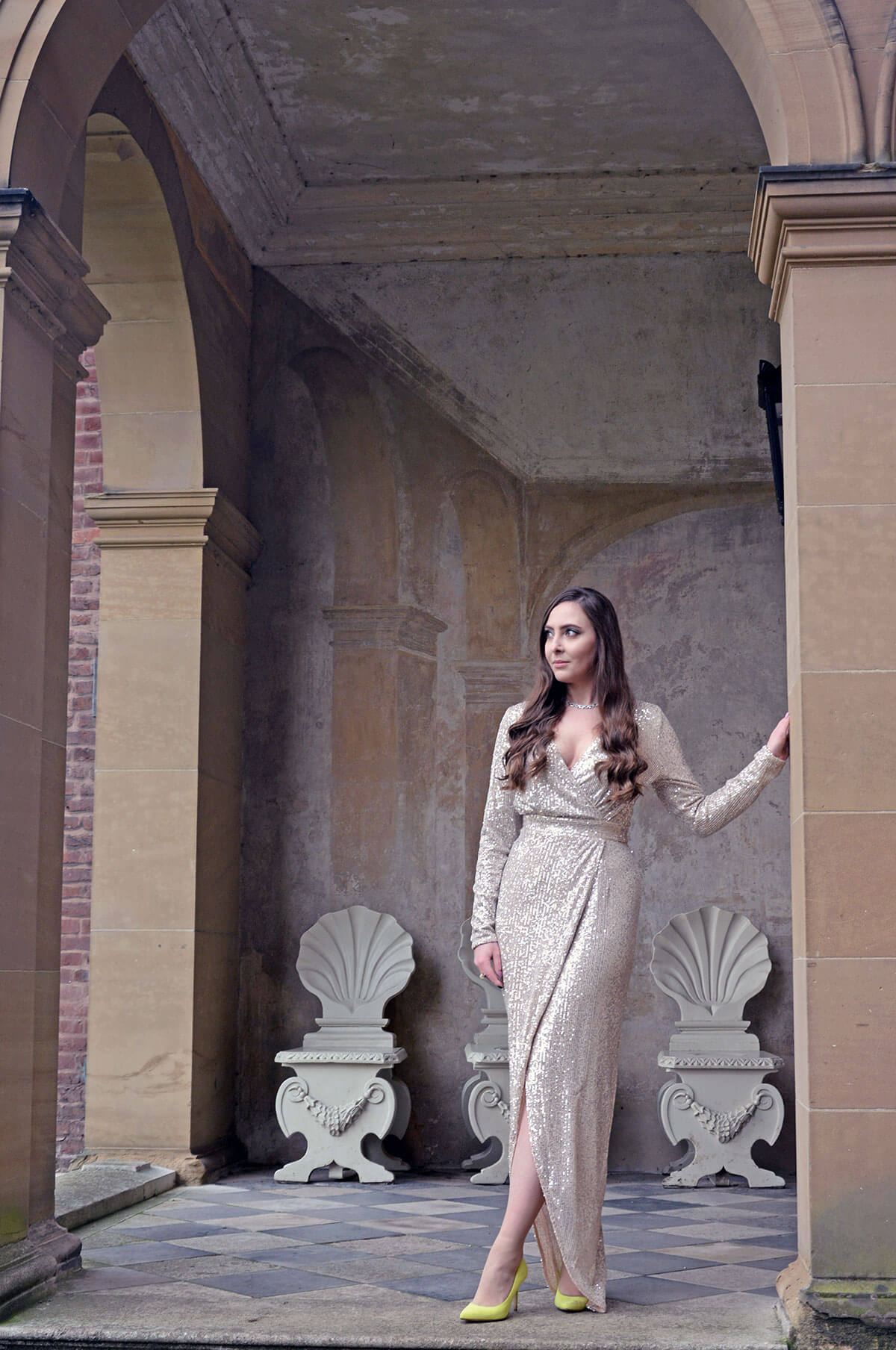

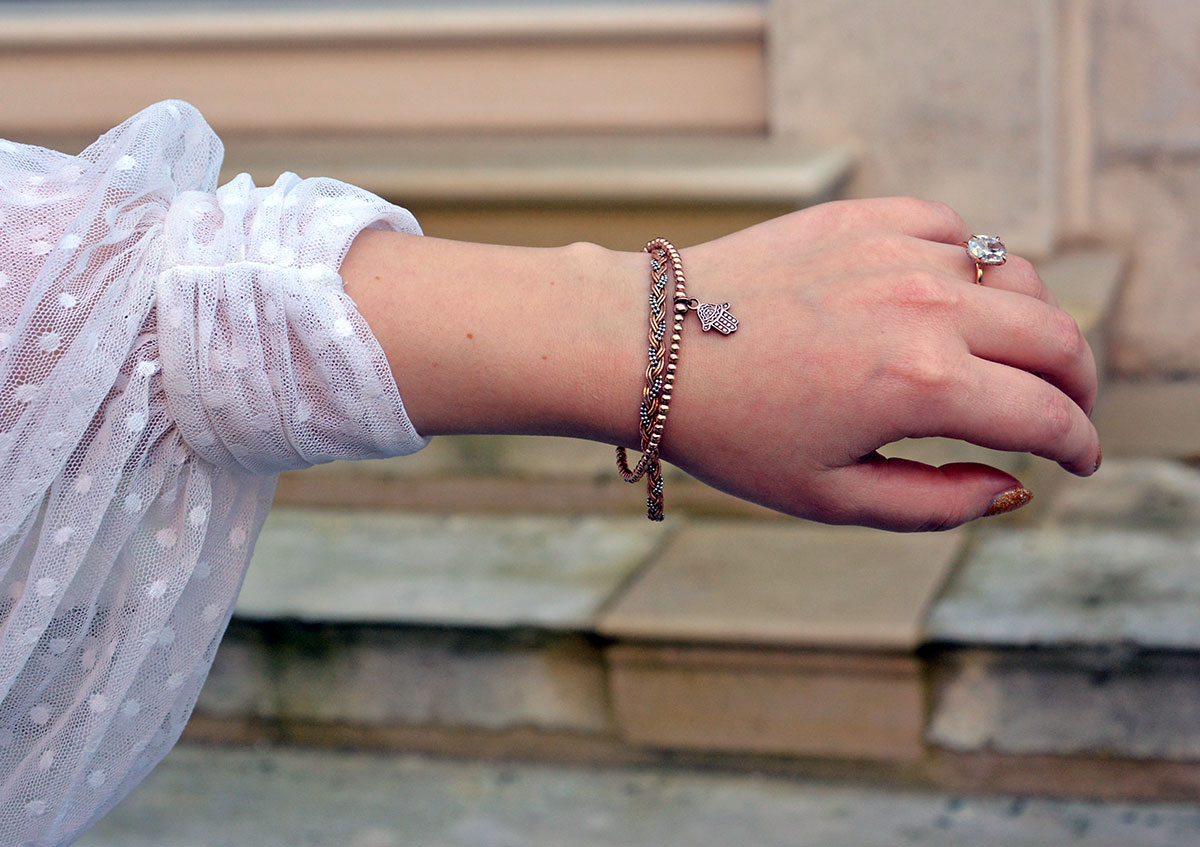
2 Responses
For me, religious jewellery is only for members of that religion. I do consider it to be appropriation otherwise. Religion is too personal and to see everyone wearing crosses and magen davids etc for fashion purposes is just too careless for me
Hi Selina,
You don’t even know how grateful I am for your response, thank you!
For such a long time I held the same thought as you outlined above. In my head, this was the only way.
But then this random thought crept into my head. What if someone really close (like really, really close) to me gave me a piece of jewellery, which meant the world to them, and now they wanted me to have and cherish it? What if it happened to be a symbol or a prayer that is from a different religion? And so I thought – I would wear it, I know I would.
In a way, the above is the reason I have explored this article.
Religious jewellery is so widely worn, in some instances, it’s almost a circus – like the Met gala’s theme a few years ago. I really wanted to know how religion itself sees this through scholars and representatives, I was really surprised by the openness of each. I expected much stricter responses.